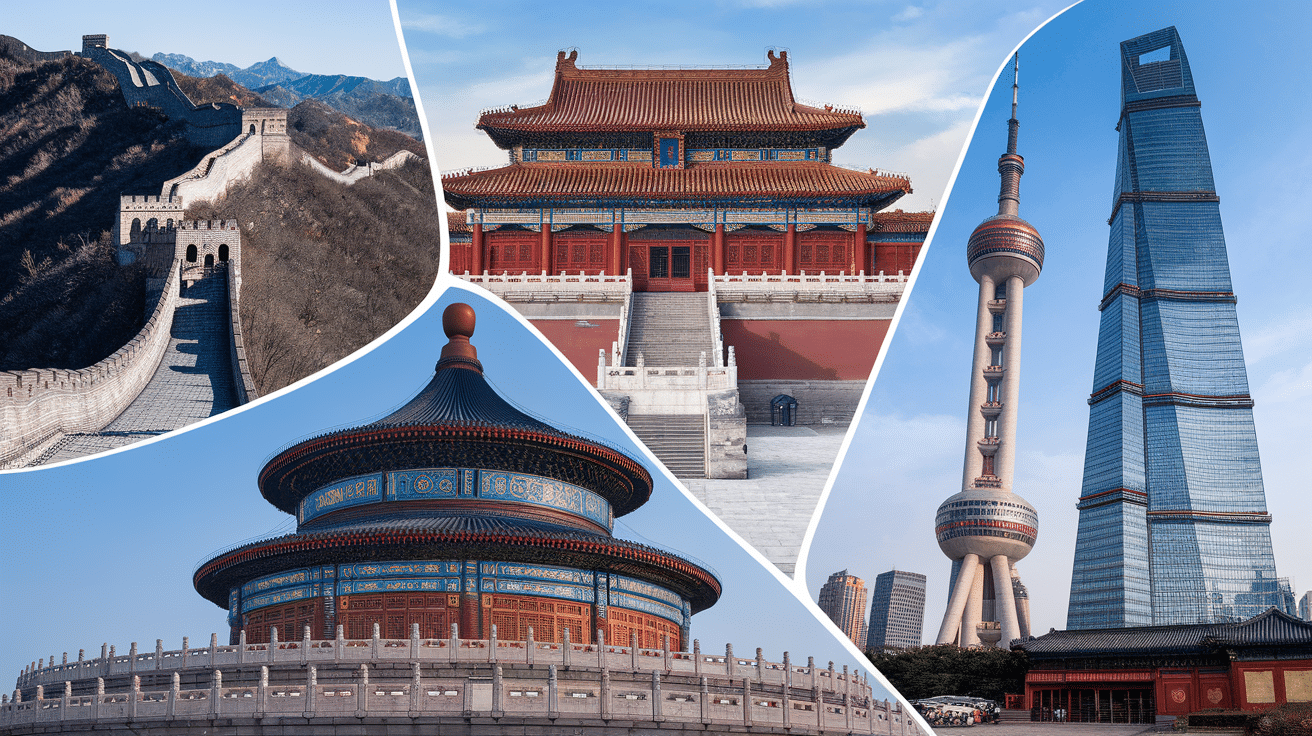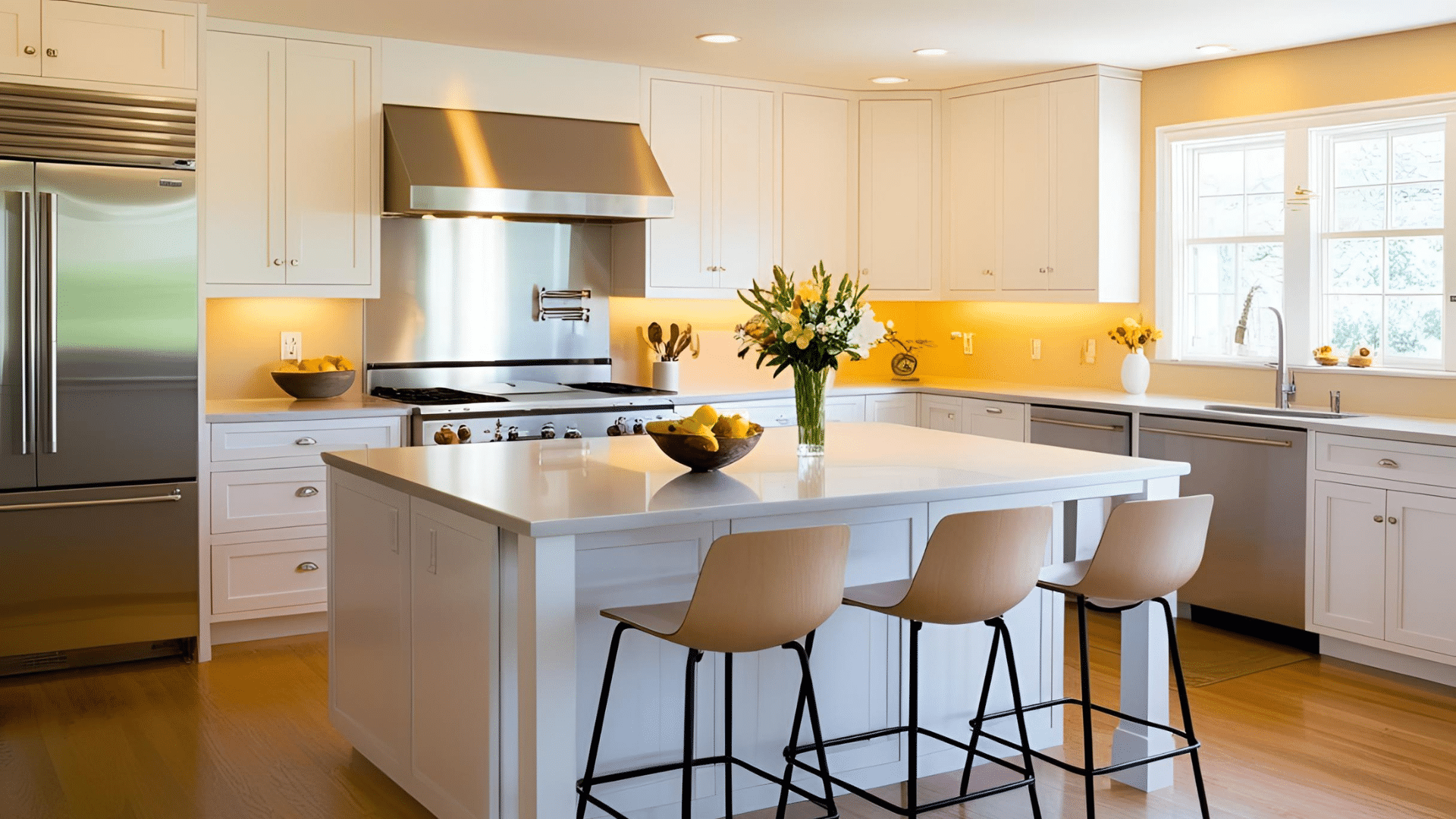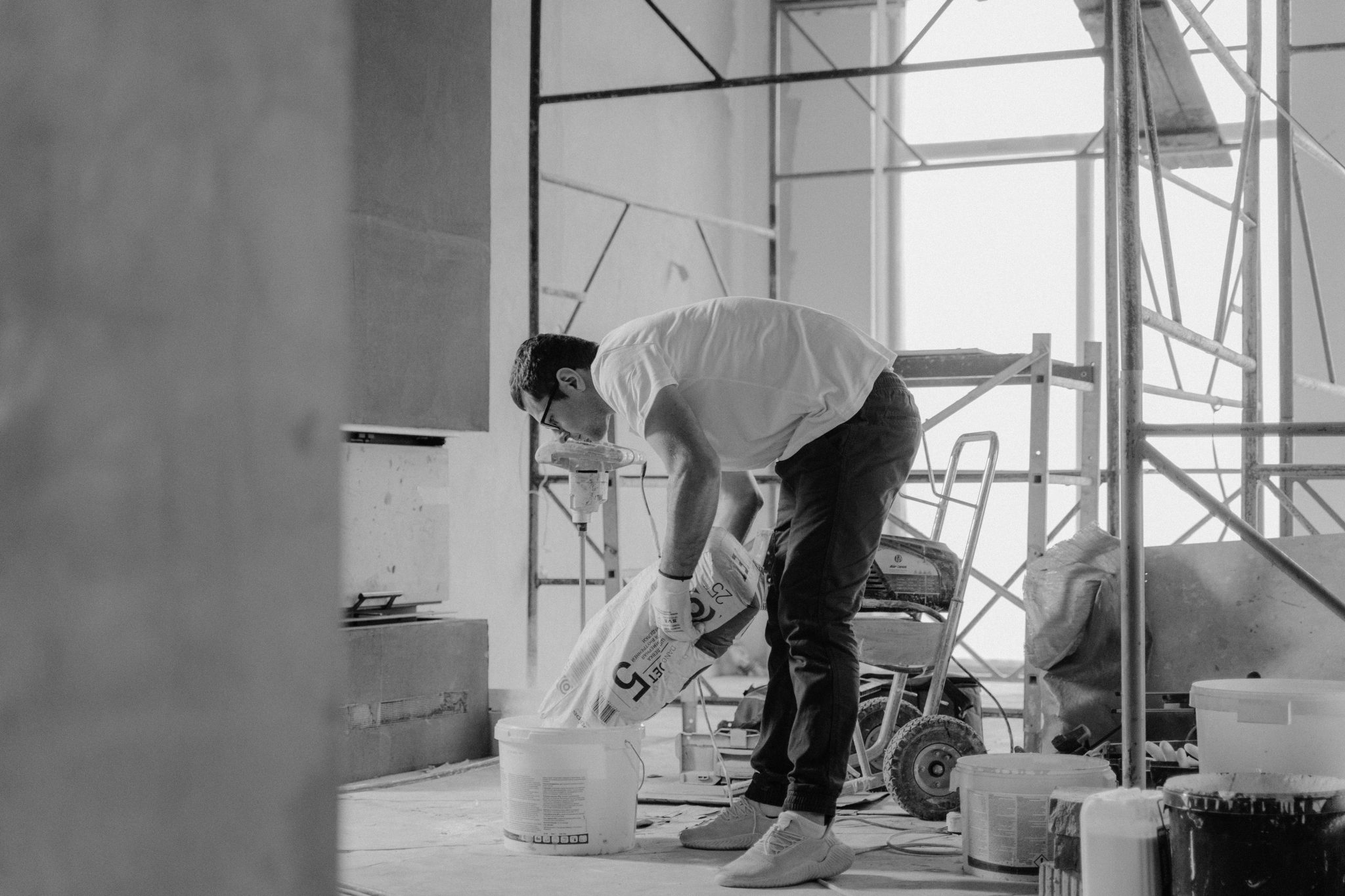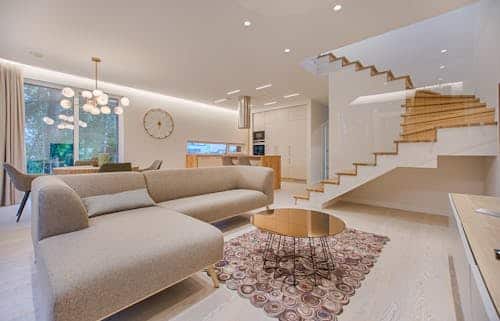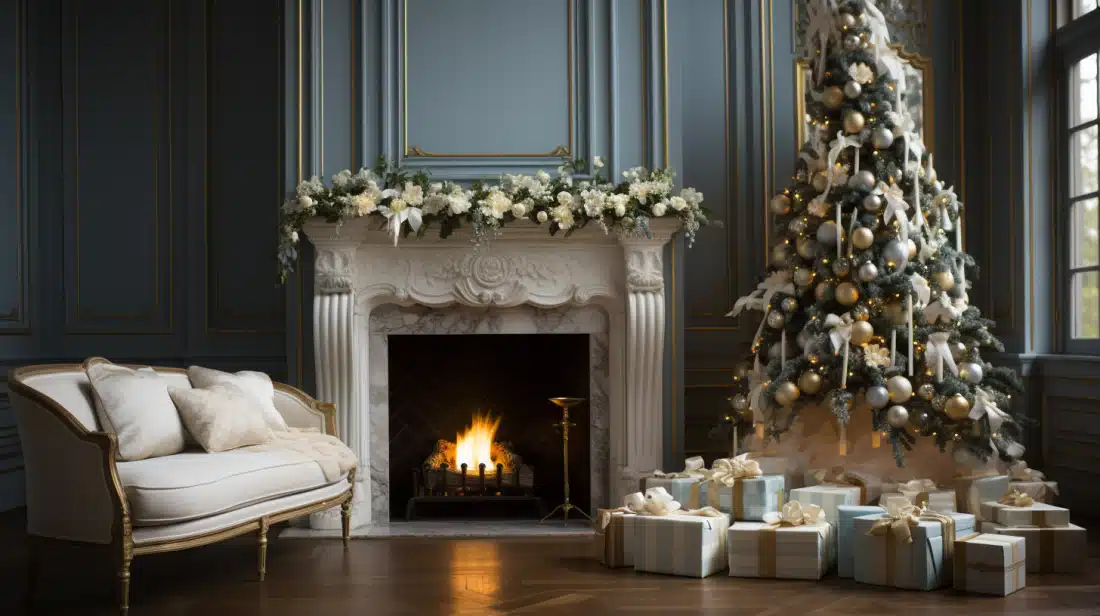28 Famous Chinese Buildings You Should See
China is home to some of the world’s most incredible buildings. From ancient temples to modern skyscrapers, Chinese architecture shows the country’s rich history and bright future.
This blog takes will give you information on the famous Chinese buildings. You will learn about ancient places like the Forbidden City and Shaolin Temple.
You will also see modern marvels like the Bird’s Nest Stadium and the Shanghai Tower. Each building has its own special story and design.
Some are over 1,000 years old, while others were built recently. Together, they show how China’s building formation has changed over time while keeping its unique character.
Why Do These Landmarks Matter?
These Chinese landmarks matter because they tell the story of China’s long history and culture.
Old buildings like the Forbidden City and temples show how people lived hundreds of years ago. They help us understand ancient Chinese beliefs and traditions.
Modern buildings like the “Bird’s Nest” stadium and the CCTV Headquarters show China’s growth as a powerful country today. They represent new ideas in building design.
These landmarks also attract millions of visitors each year. Tourism creates jobs and helps local businesses. Many are UNESCO World Heritage sites, which means they are protected for future generations.
By saving these special places, people can learn about China’s past while seeing how the country continues to change and develop. They are physical connections between China’s history and its future.
List of Famous Chinese Buildings
China has many amazing buildings. Every building showcases different stories. Some are home to emperors, while others might have hosted the Olympics and so on.
1. Labrang Tashi Kyil Monastery
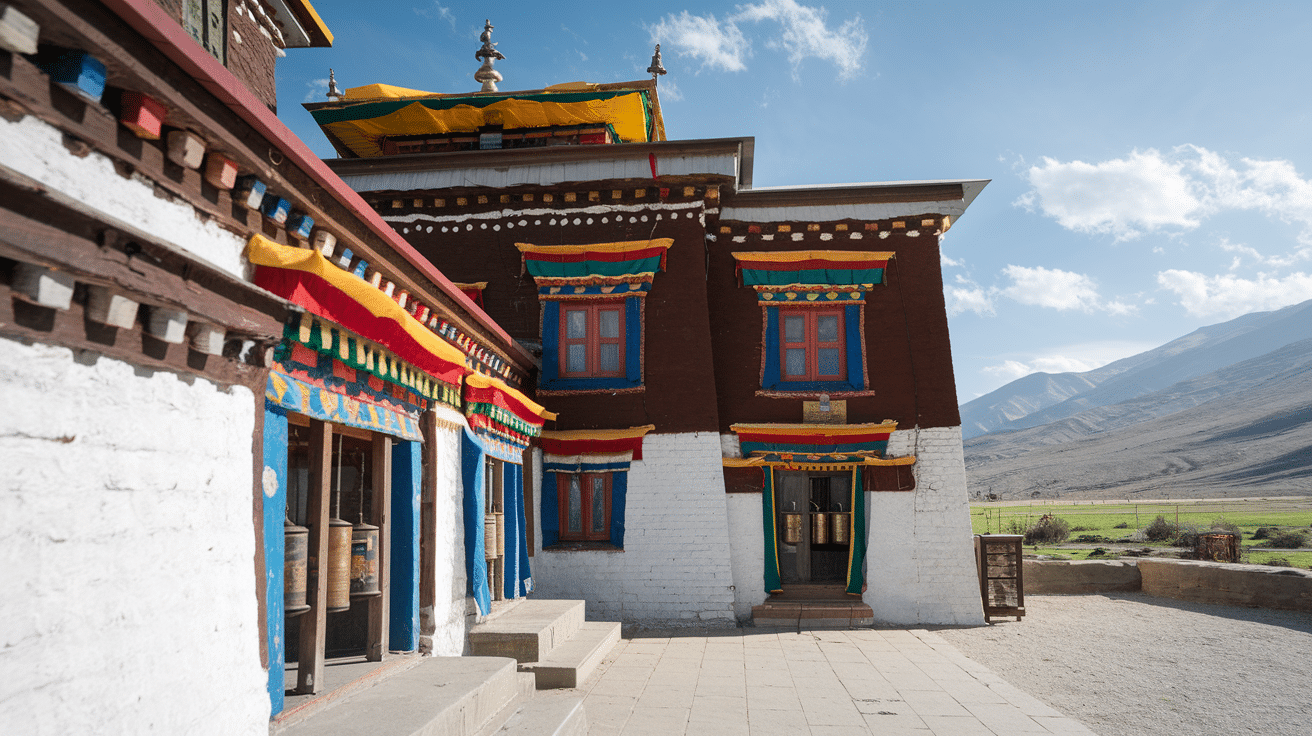
Labrang Tashi Kyil Monastery is in China, on a mountain. It is one of the most important Tibetan monasteries outside Lhasa.
The monastery has many buildings and is home to thousands of monks. It has a big hall, beautiful statues, and many old books.The monastery is known for its peaceful setting and religious importance.
Visitors can see the golden Buddha and the fine Nepalese artwork inside the monastery.
2. Shaolin Temple
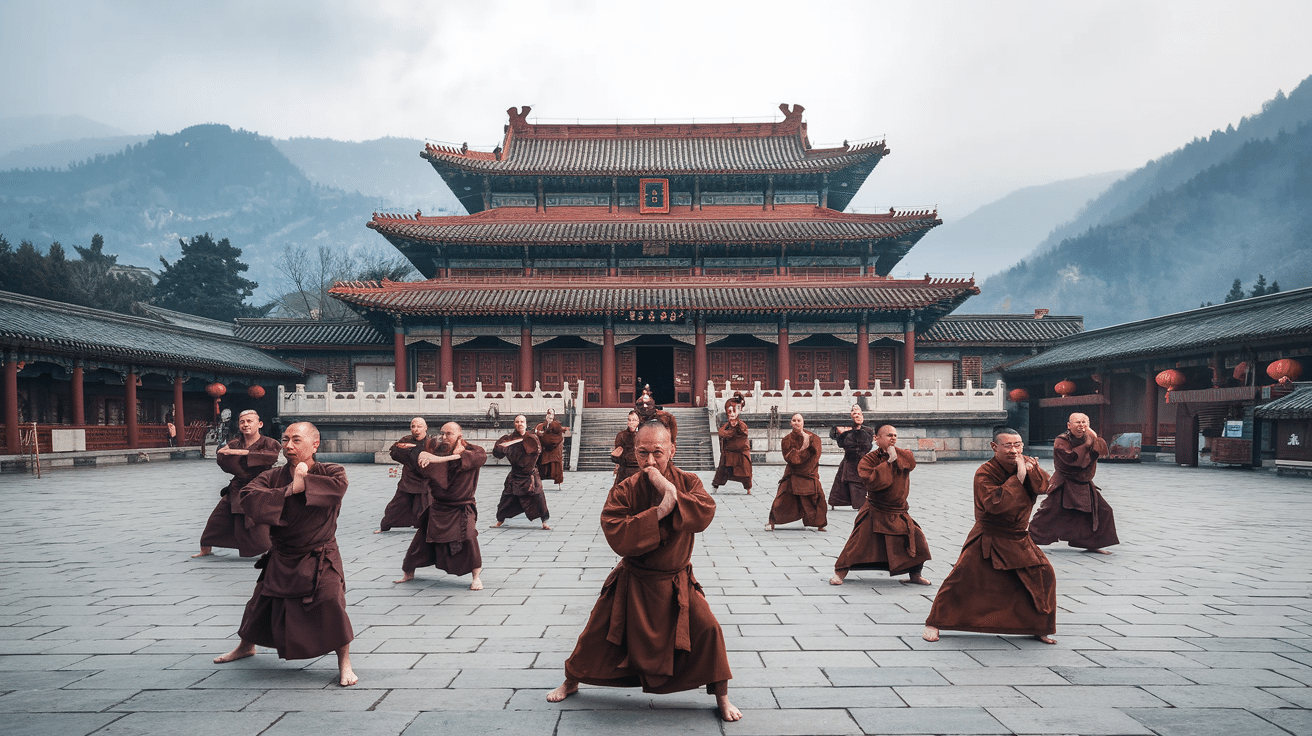
The Shaolin Temple is in China and is famous for its connection to Zen Buddhism and martial arts.
Built in 495, it has many buildings, including the Thousand Buddhas Hall. The temple is known for its beautiful murals and peaceful atmosphere. It’s also the birthplace of Shaolin kung fu.
The Pagoda Forest near the temple is home to many historical burial pagodas, and it’s a must-see for visitors interested in history and martial arts.
3. Kowloon Ventilation Building
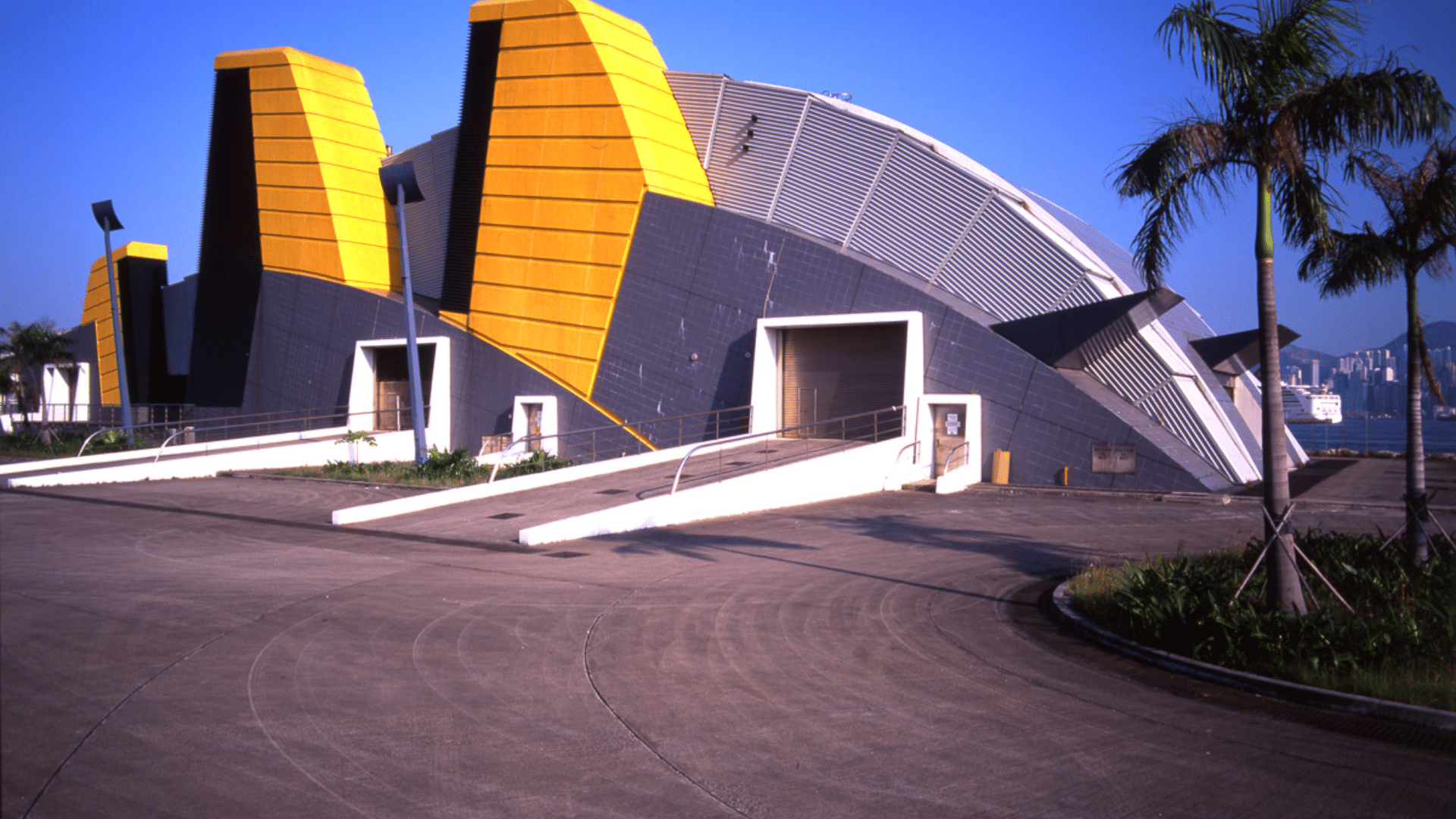
The Kowloon Ventilation Building is located in Hong Kong. It is part of the city’s airport system. The building was designed to help ventilate the underground tunnels of the airport railway.
Its unique shape looks like a crouched animal. The structure was designed to blend in with the landscape, inspired by the flowing waves of the harbor.
It is a functional building with a very creative and artistic design, making it a landmark of modern architecture.
4. Hanging Monastery of Xuan Kong Si
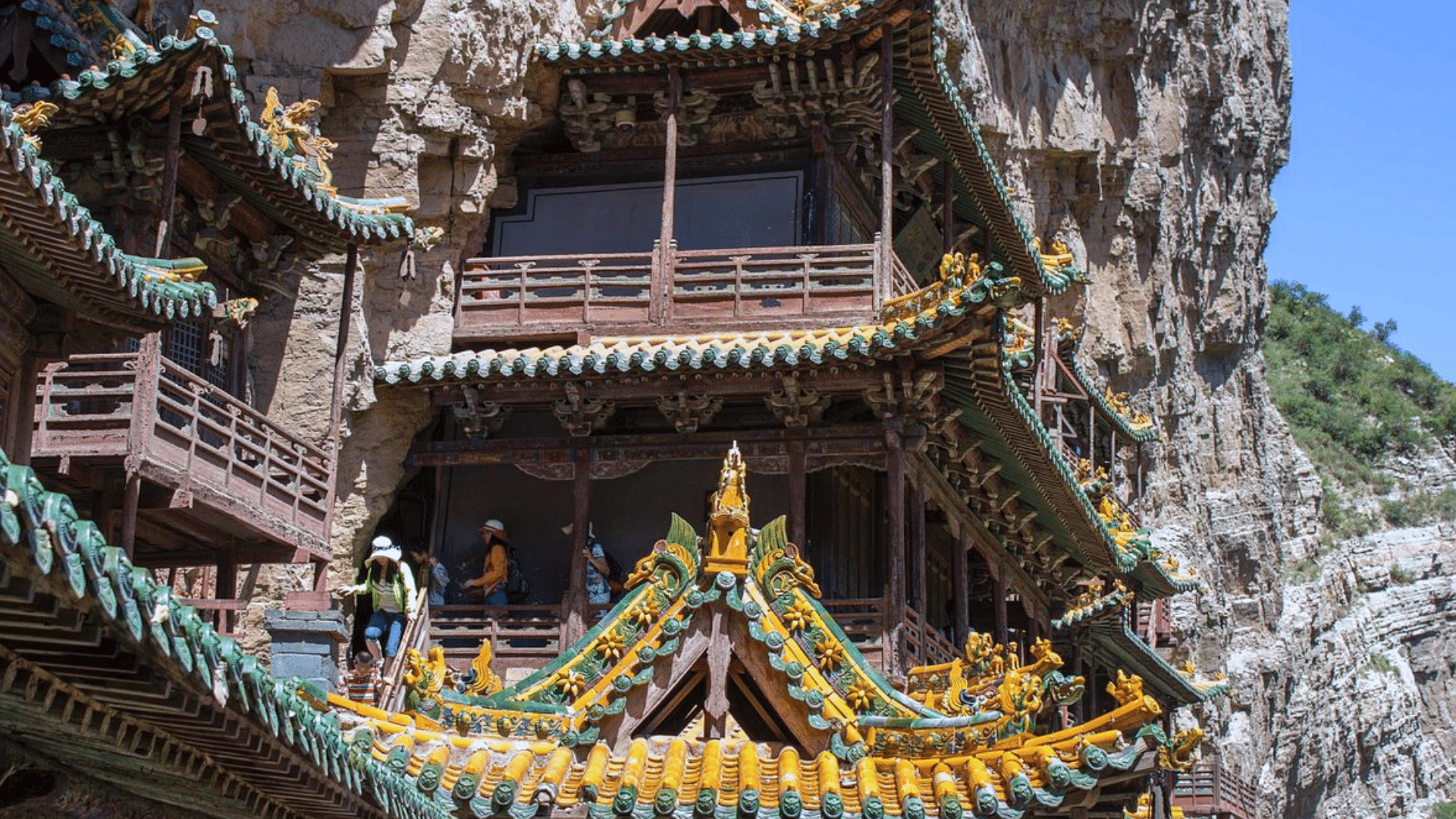
The Hanging Monastery of Xuan Kong Si is built on the side of a mountain in China. It was built more than 1,500 years ago.
The monastery is unique because it hangs on the cliff, supported by wooden beams. It combines elements of Taoism, Buddhism, and Confucianism.
Visitors can walk between buildings on wooden walkways. The monastery is a beautiful example of how architecture can blend with nature and stand the test of time.
5. Temple of Confucius
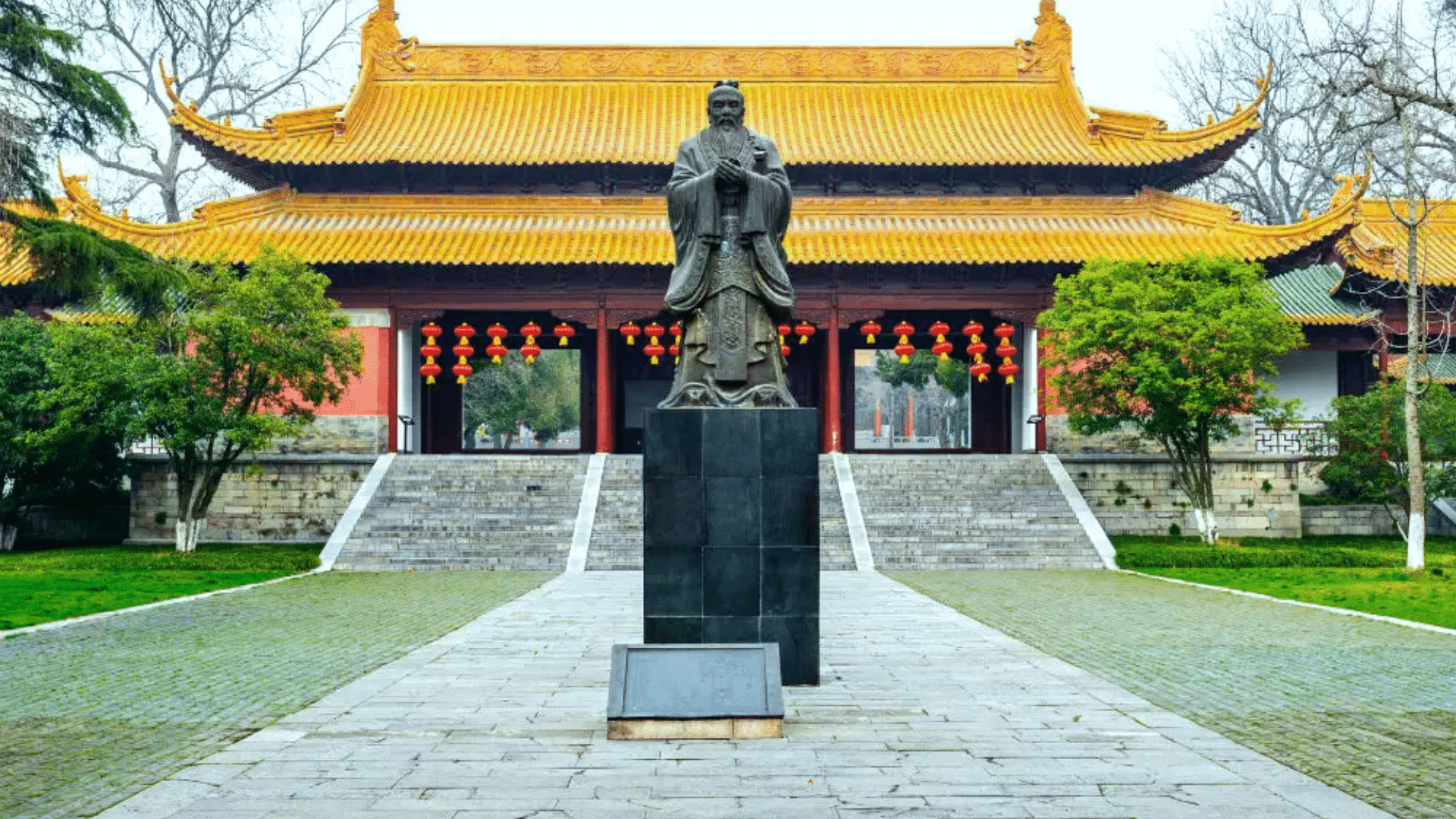
The Temple of Confucius in China is a tribute to the philosopher Confucius. The temple was built to honor his teachings. It has been expanded over 2,000 years. The temple includes several halls and courtyards.
The structure is beautifully designed with red walls, golden roofs, and white marble. It also has a library that stores ancient texts.
It’s an important cultural and historical site, reflecting Confucian philosophy and Chinese history.
6. Ningbo History Museum
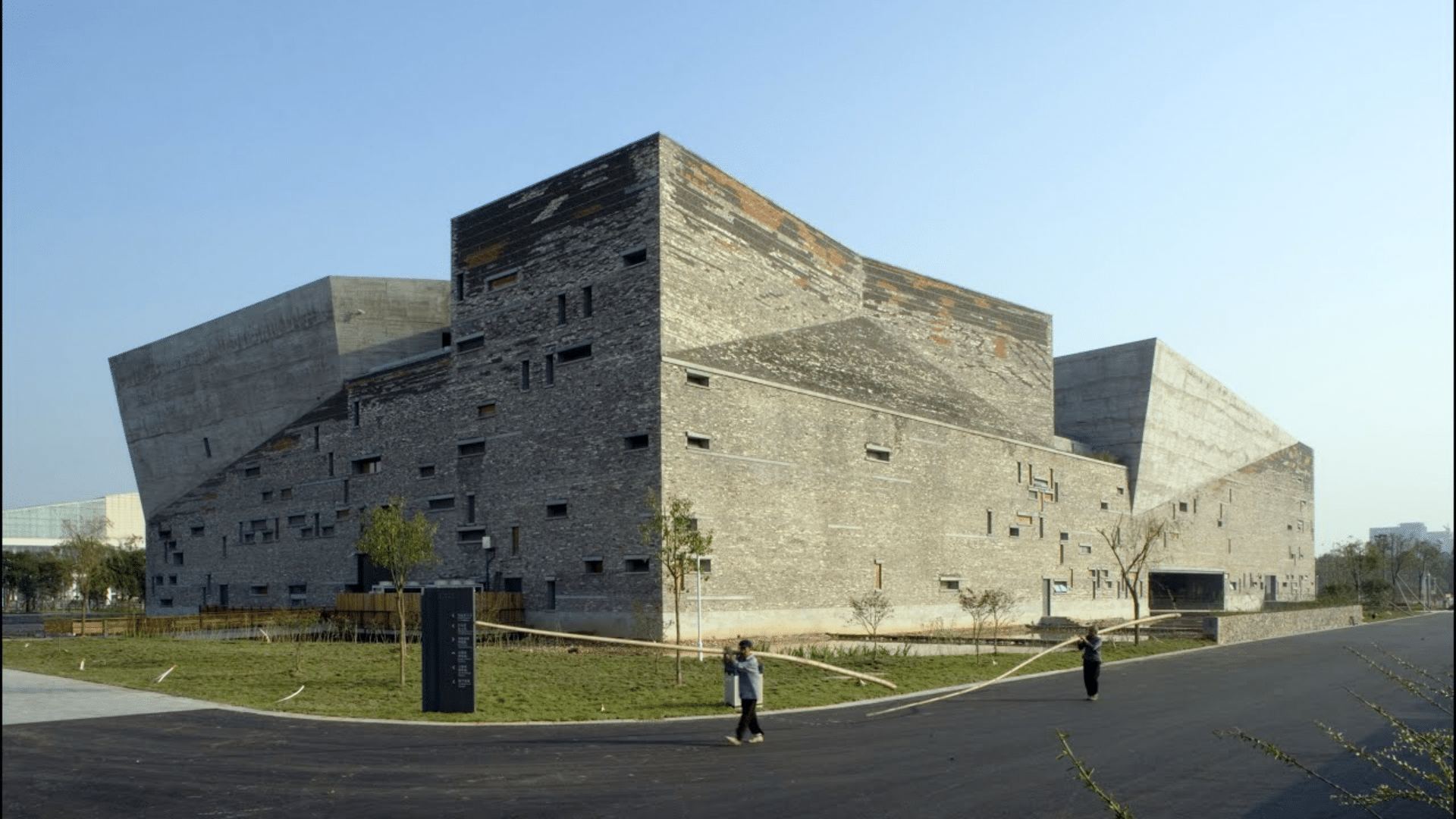
The Ningbo History Museum in China was designed by architect Wang Shu. The building’s design is inspired by nature, with walls made of reclaimed materials like bricks and stones.
It looks like a natural landscape, blending modern architecture with traditional methods. The museum showcases the history and culture of Ningbo.
The unique design of the building, with its unusual shapes and patterns, makes it stand out. It’s a great place to learn about Ningbo’s past.
7. Summer Palace
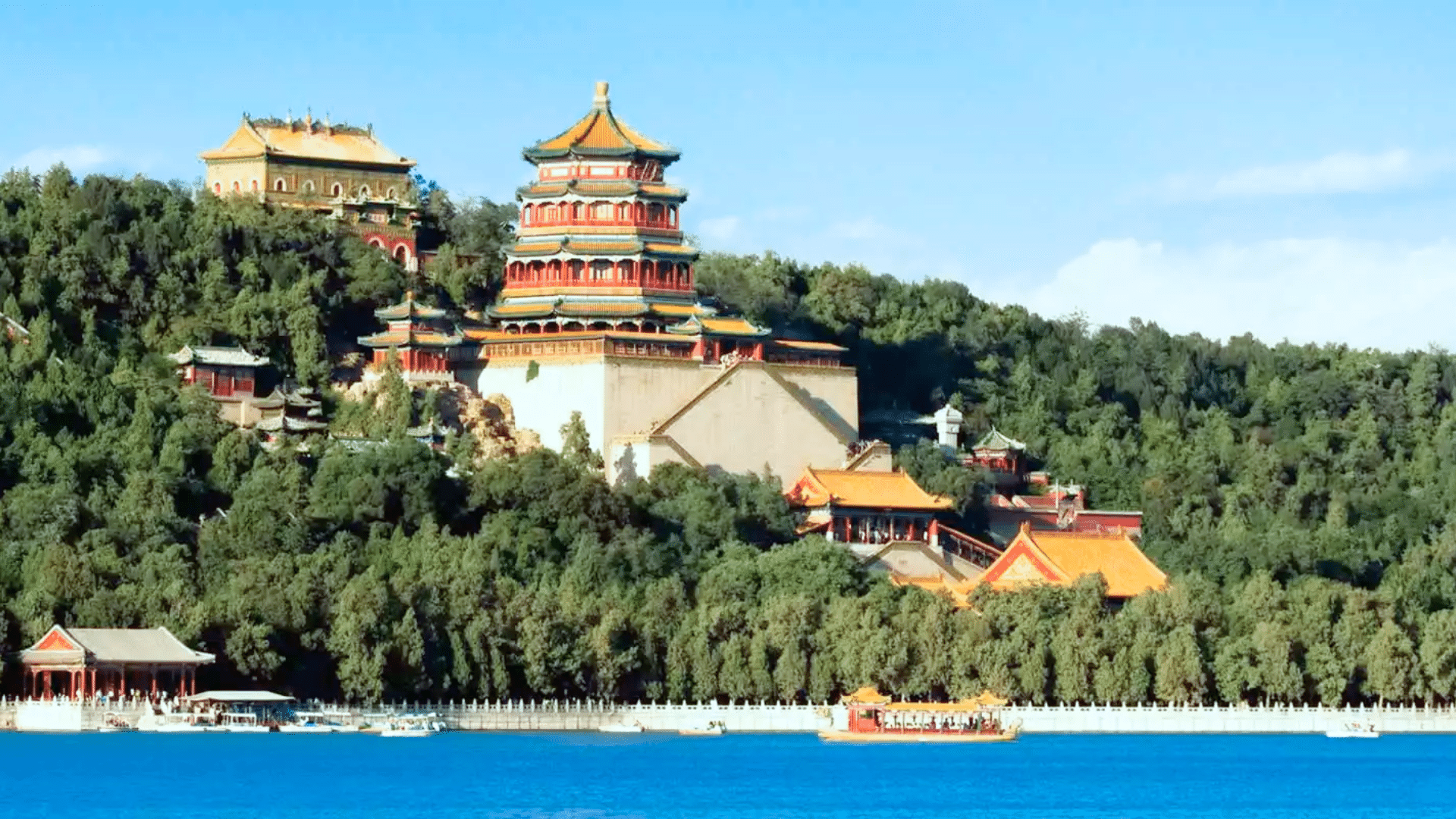
The Summer Palace in Beijing is a vast imperial garden. It was built in 1750 and is a beautiful blend of natural scenery and man-made architecture.
The palace is surrounded by Kunming Lake and features traditional Chinese gardens, pavilions, and temples.The Long Gallery, a 2,388-foot-long covered walkway, is decorated with thousands of paintings.
The Marble Boat is a famous feature of the palace. Visitors can enjoy the peaceful atmosphere and scenic views while exploring the palace grounds.
8. Great Hall of the People
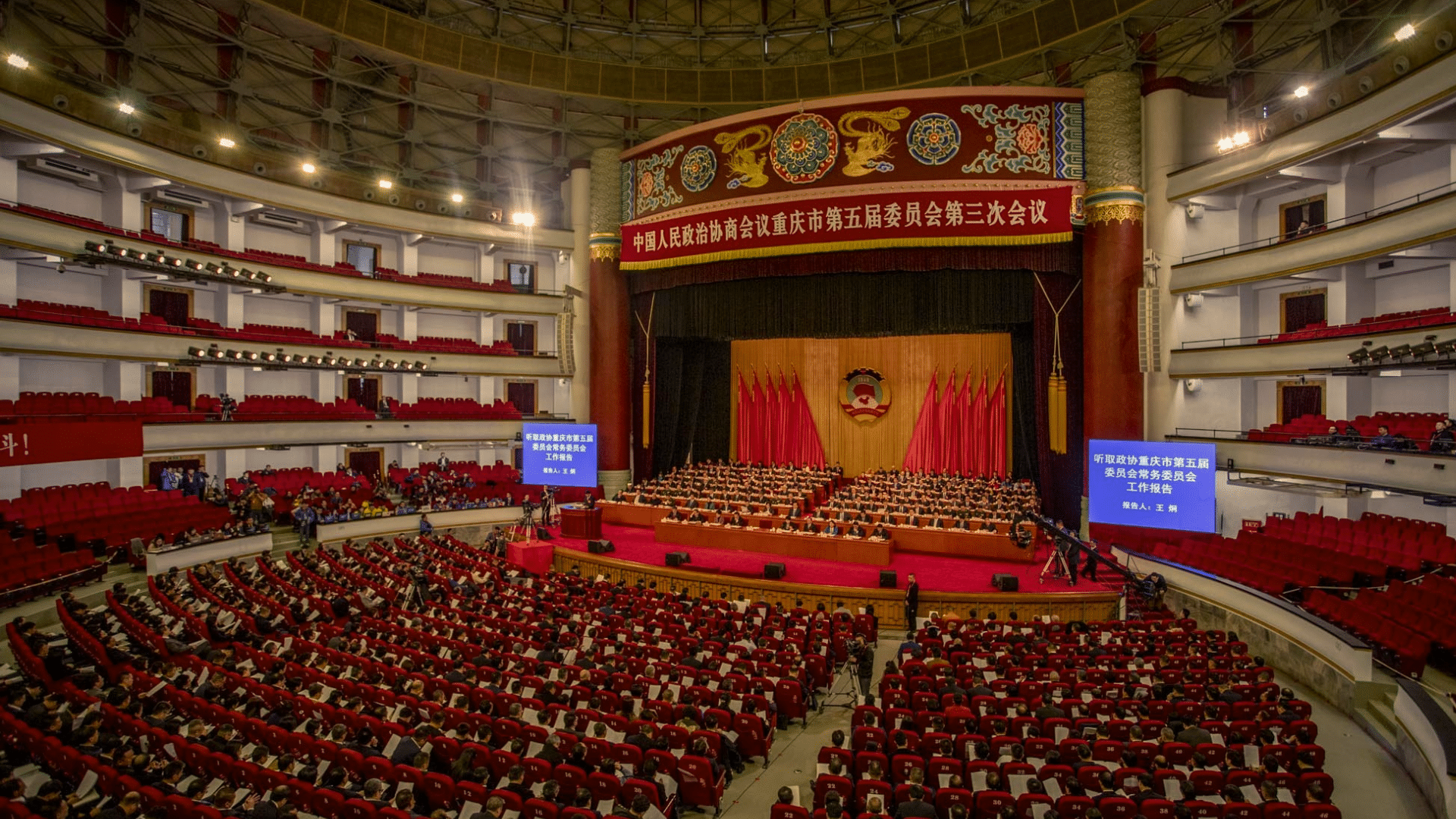
The Great Hall of the People is located in Beijing, China. It is used for government meetings and official events. The building is huge, with a large red emblem above the main entrance.
The hall is very important for the Chinese government, hosting events like the annual National People’s Congress.
Inside, there are conference rooms, offices, and an impressive auditorium that can seat thousands. The building represents China’s political power and modern architecture.
9. National Grand Theater of China
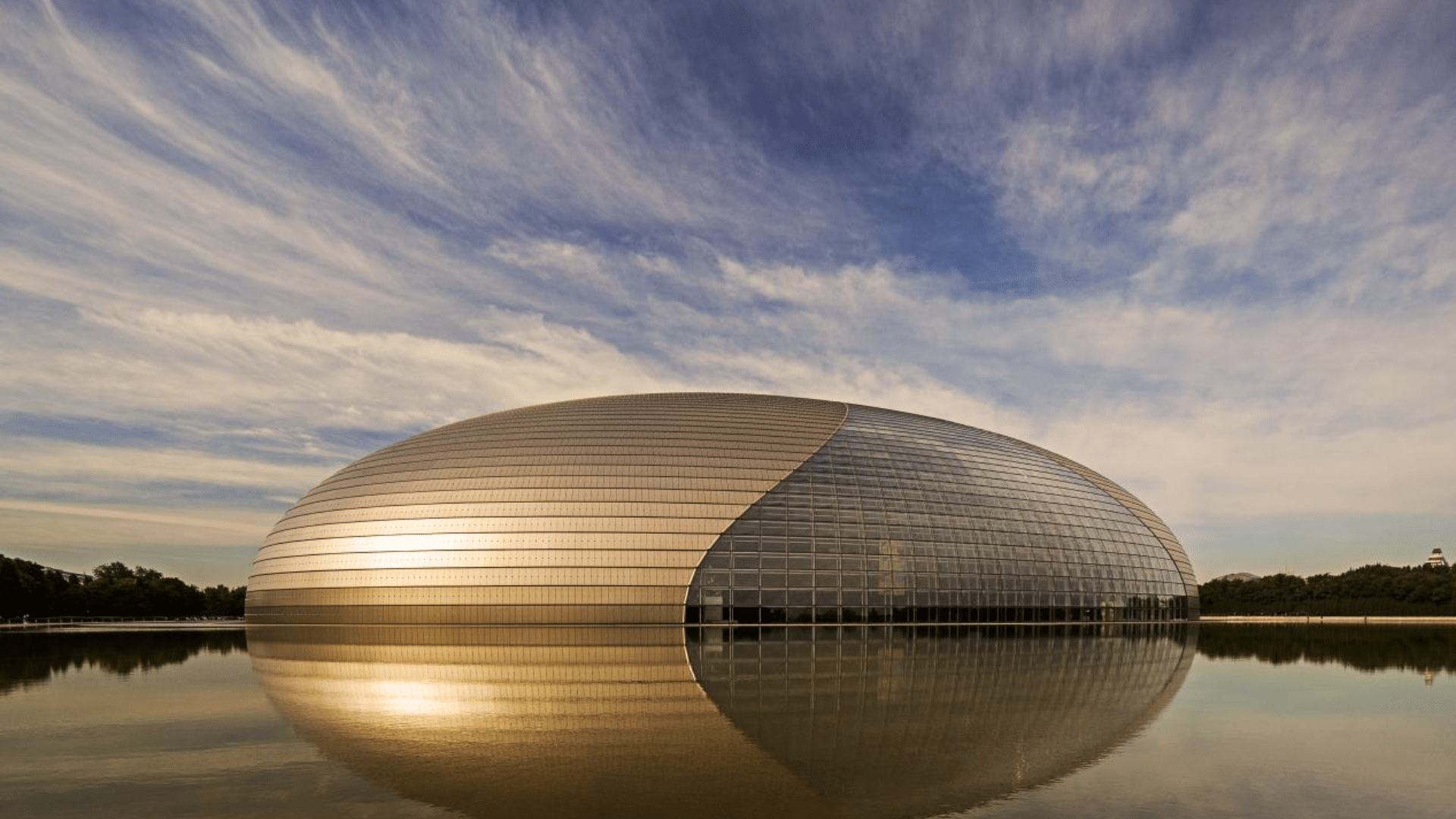
The National Grand Theater of China in Beijing is an iconic modern building. It is also known as the “Egg” because of its unique, oval shape.
The building is surrounded by a large reflecting pool, making it look like it’s floating. Inside, there are three main performance venues, including an opera house and a concert hall.
The design combines futuristic style with traditional Chinese aesthetics, making it a beautiful landmark for the city and a hub for arts and culture.
10. China Central Television Headquarters
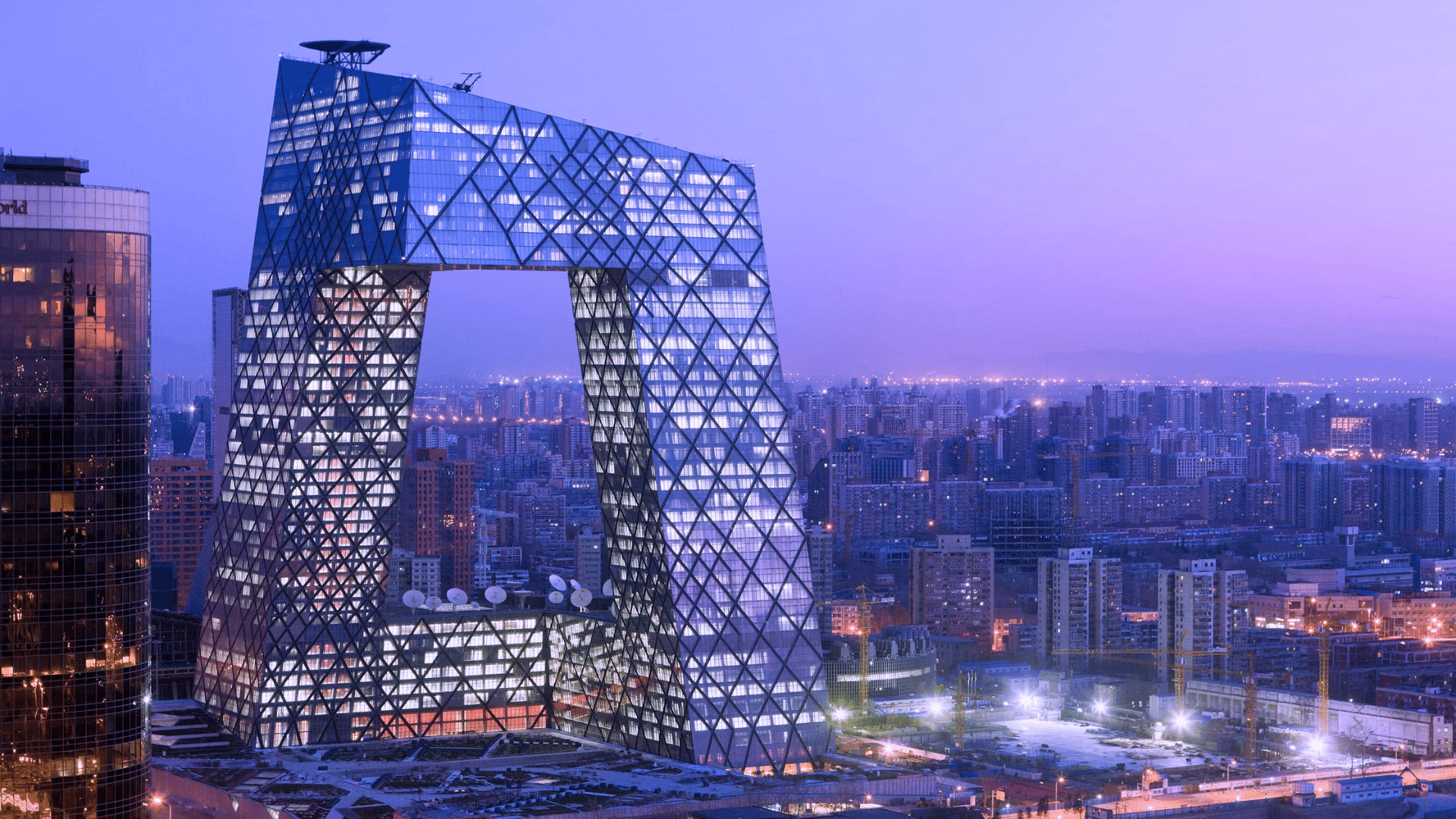
The China Central Television (CCTV) Headquarters is in Beijing. This striking building is known for its unusual design. The structure looks like two towers connected by a big bridge.
It’s one of the tallest buildings in China and a modern architectural marvel. The building houses the CCTV network’s offices and broadcasting facilities.
The design is bold and unconventional, making it a prominent symbol of China’s growing influence in the world of media and technology.
11. Beijing National Stadium
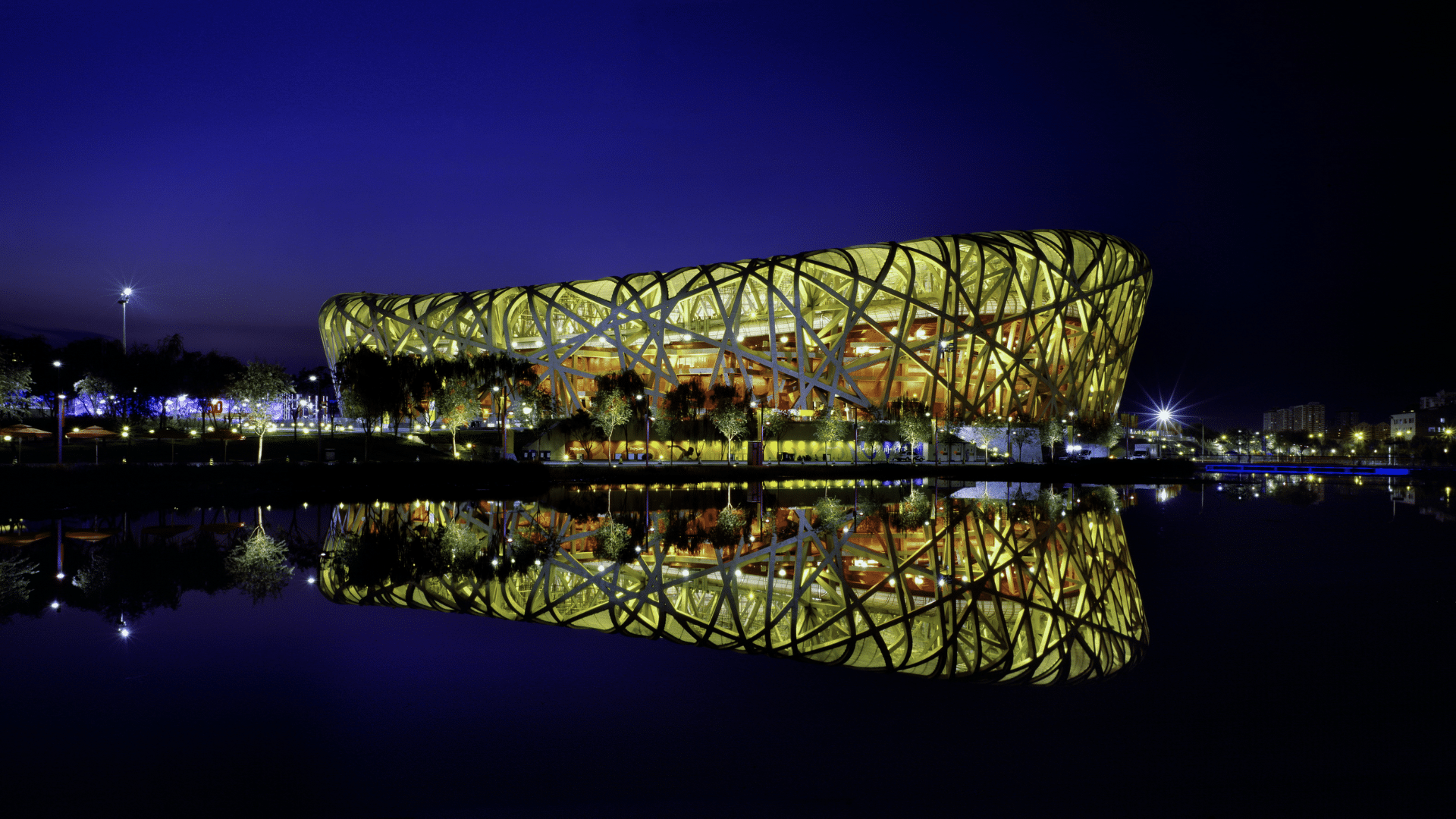
The Beijing National Stadium, also known as the “Bird’s Nest,” was built for the 2008 Olympics. It has a unique, open structure with crisscrossing steel beams that look like a bird’s nest.
The stadium can hold 91,000 spectators and is used for major sports events and concerts. The design makes the building both strong and beautiful.
The surrounding park is designed to complement the stadium, making it a key feature of Beijing’s urban landscape.
12. Big Wild Goose Pagoda
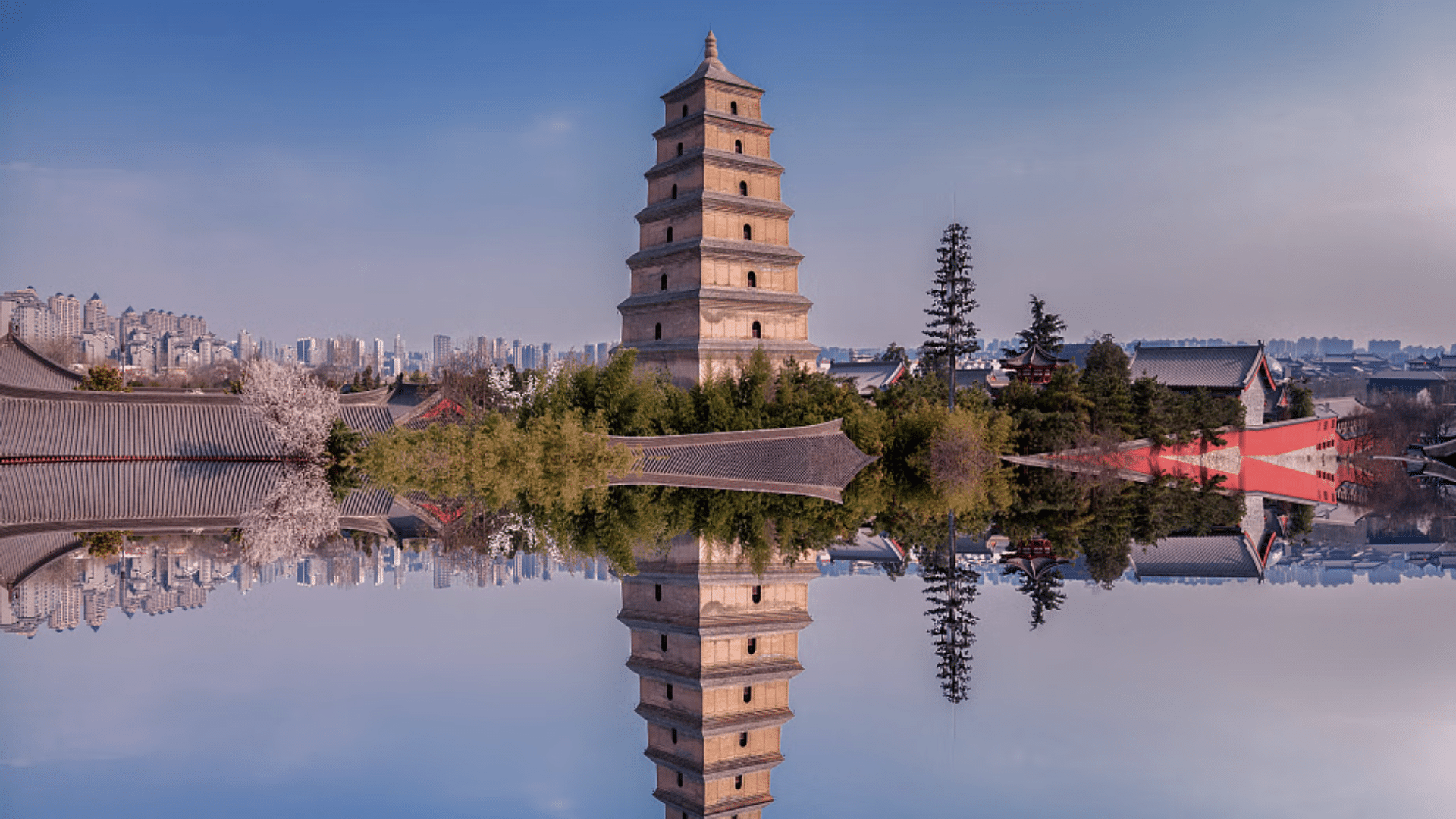
The Big Wild Goose Pagoda is located in Xi’an, China. It was built in 648 to hold Buddhist scriptures brought from India.
The pagoda has seven stories and stands at a height of 210 feet. It is a beautiful example of Tang Dynasty architecture. The pagoda leans slightly, which adds to its charm.
It is one of the oldest and most famous pagodas in China, attracting many visitors who are interested in Chinese history and Buddhism.
13. Guangzhou Opera House
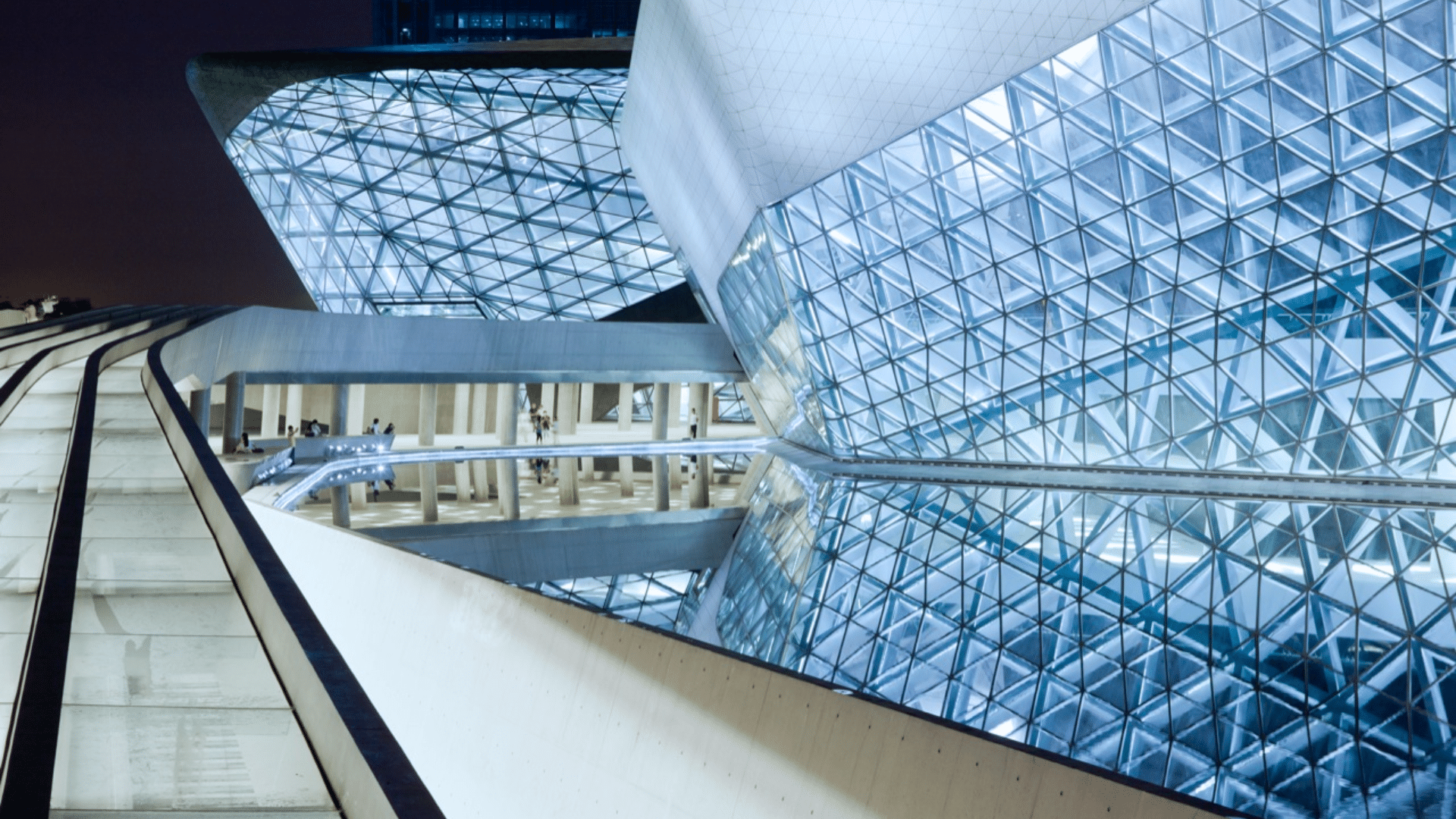
The Guangzhou Opera House is a stunning piece of modern architecture. Designed by Zaha Hadid, it looks like two large boulders sitting on the ground.
The design is inspired by the natural landscape and is meant to reflect the shape of river stones. Inside, there are two main performance halls for opera, concerts, and other performances.
The building’s futuristic look makes it a landmark in Guangzhou, symbolizing the city’s growing cultural importance.
14. Hong Kong and Shanghai Bank Headquarters
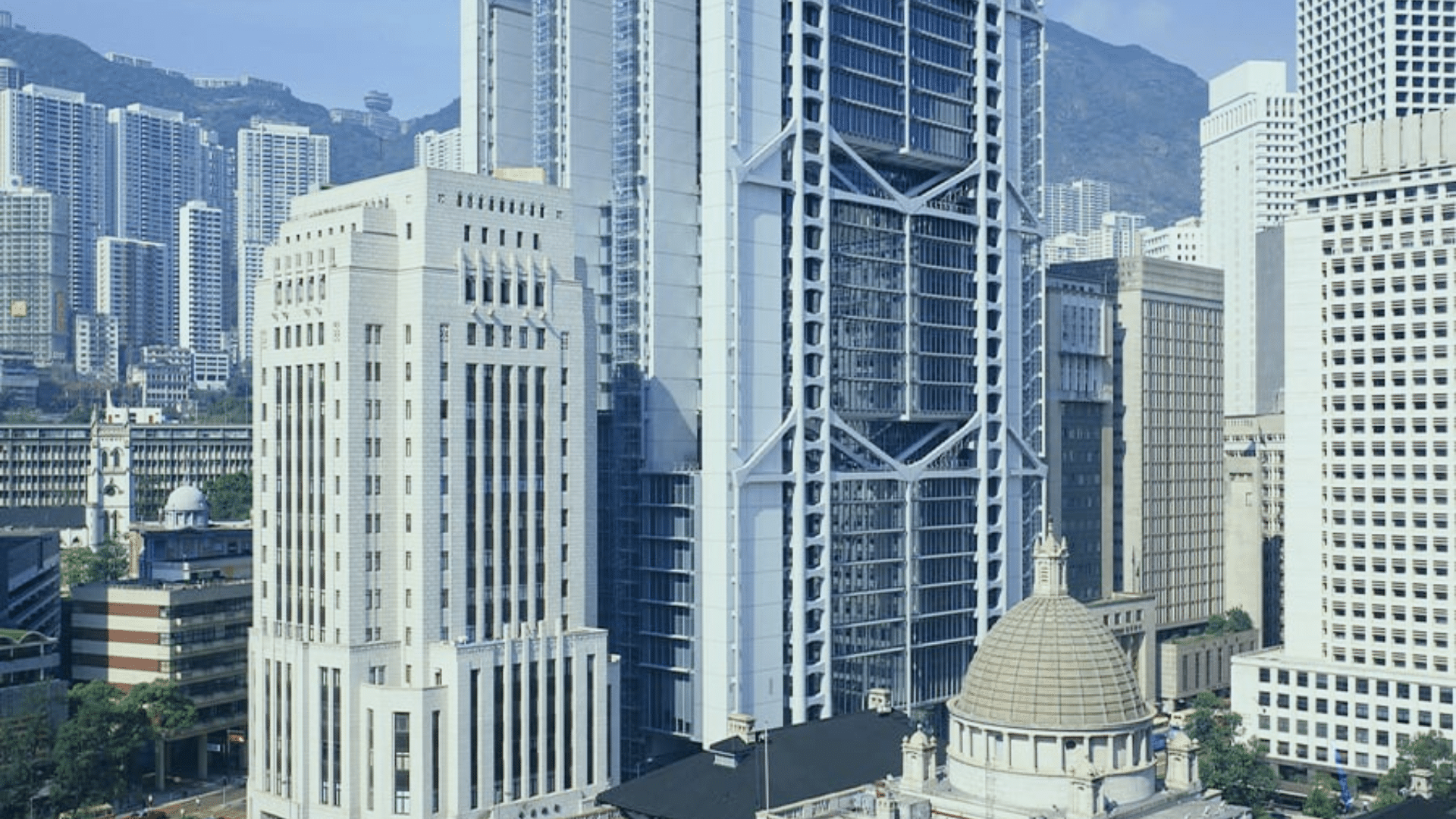
The Hong Kong and Shanghai Bank Headquarters, also known as the HSBC Building, is an important landmark in Hong Kong.
Designed by architect Norman Foster, the building features a unique structure where the services and supports are on the outside. The building has a large glass atrium that allows natural light to enter.
It is one of the most expensive buildings built at the time and symbolizes Hong Kong’s rapid growth and development in the 1980s.
15. Bank of China Tower
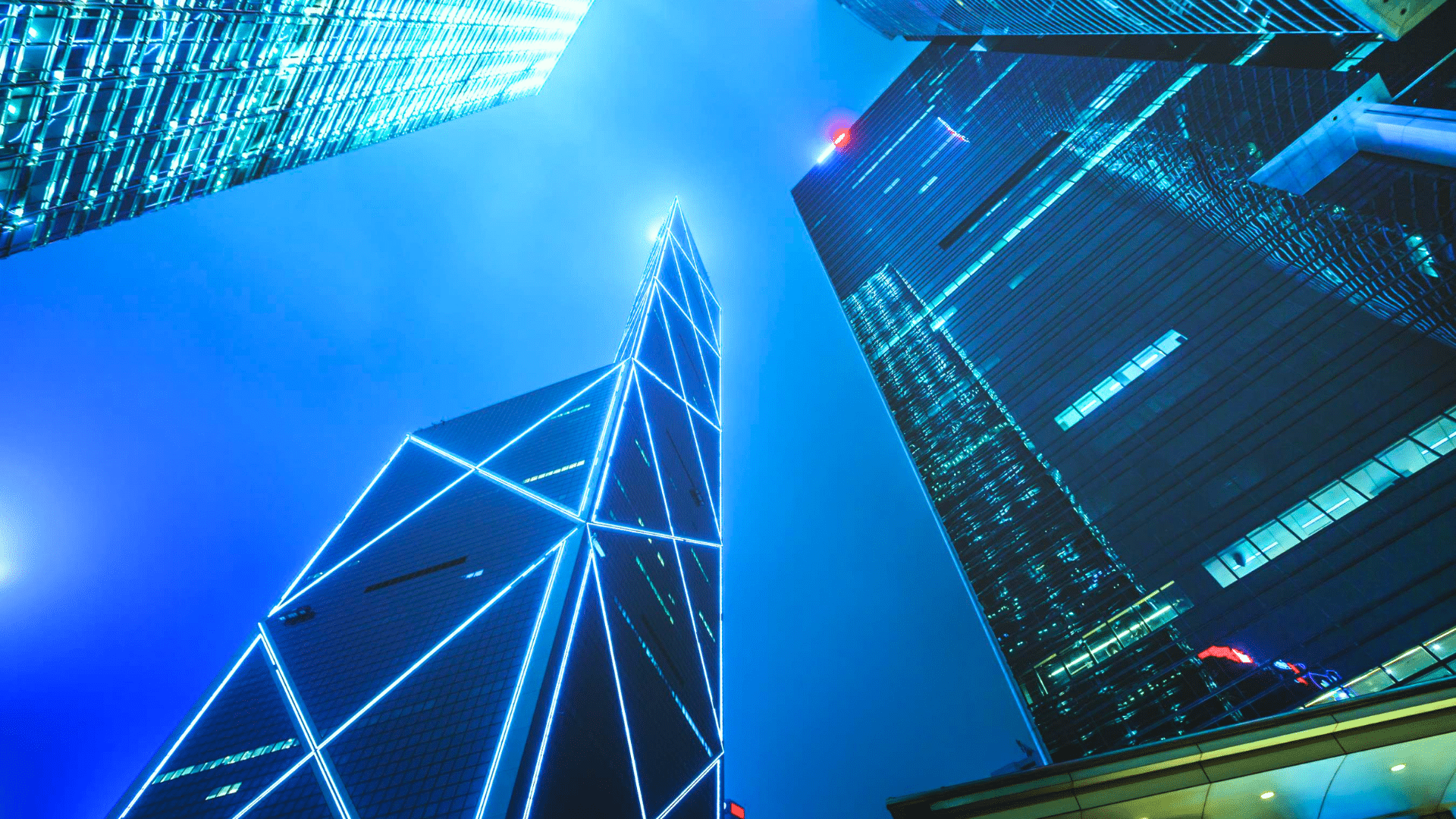
The Bank of China Tower in Hong Kong is a striking building designed by I.M. Pei. It has a unique design with four triangular towers that seem to rise from the ground.
The tower was the tallest building in Hong Kong when it was built in 1990. The design represents prosperity and good luck, and its asymmetrical structure stands out in Hong Kong’s skyline.
It is a great example of modern architecture mixed with traditional Chinese symbolism.
16. Custom House
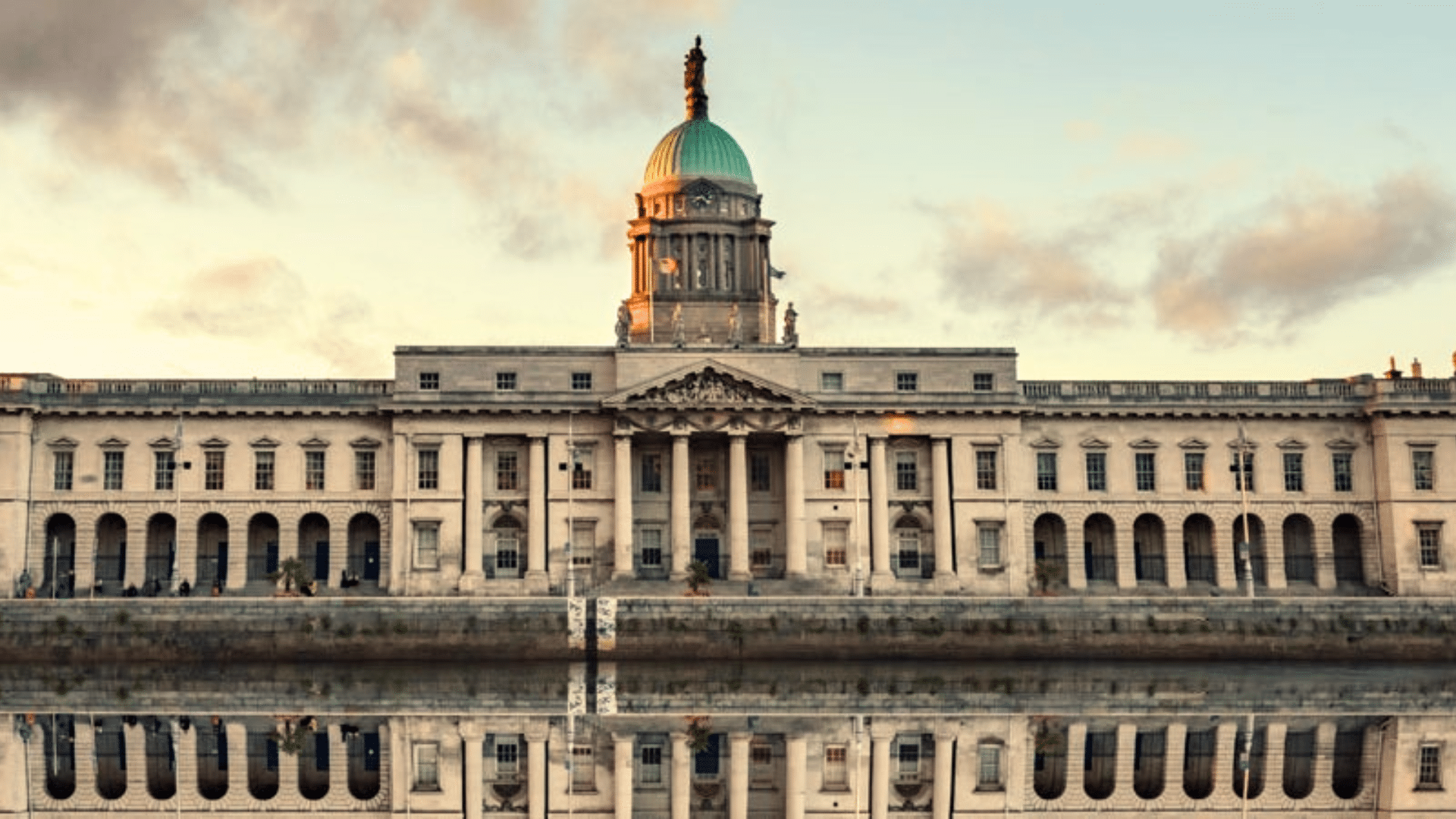
The Custom House is a historical building located in Shanghai. It was designed by the Palmer & Turner firm and built in the early 20th century.
The building is a great example of Neoclassical architecture with its grand Doric columns. It was originally used for customs and now stands as a key landmark on the Bund, overlooking the Huangpu River.
The building’s clock tower and elegant facade make it a prominent feature of Shanghai’s historic waterfront.
17. Park Hotel
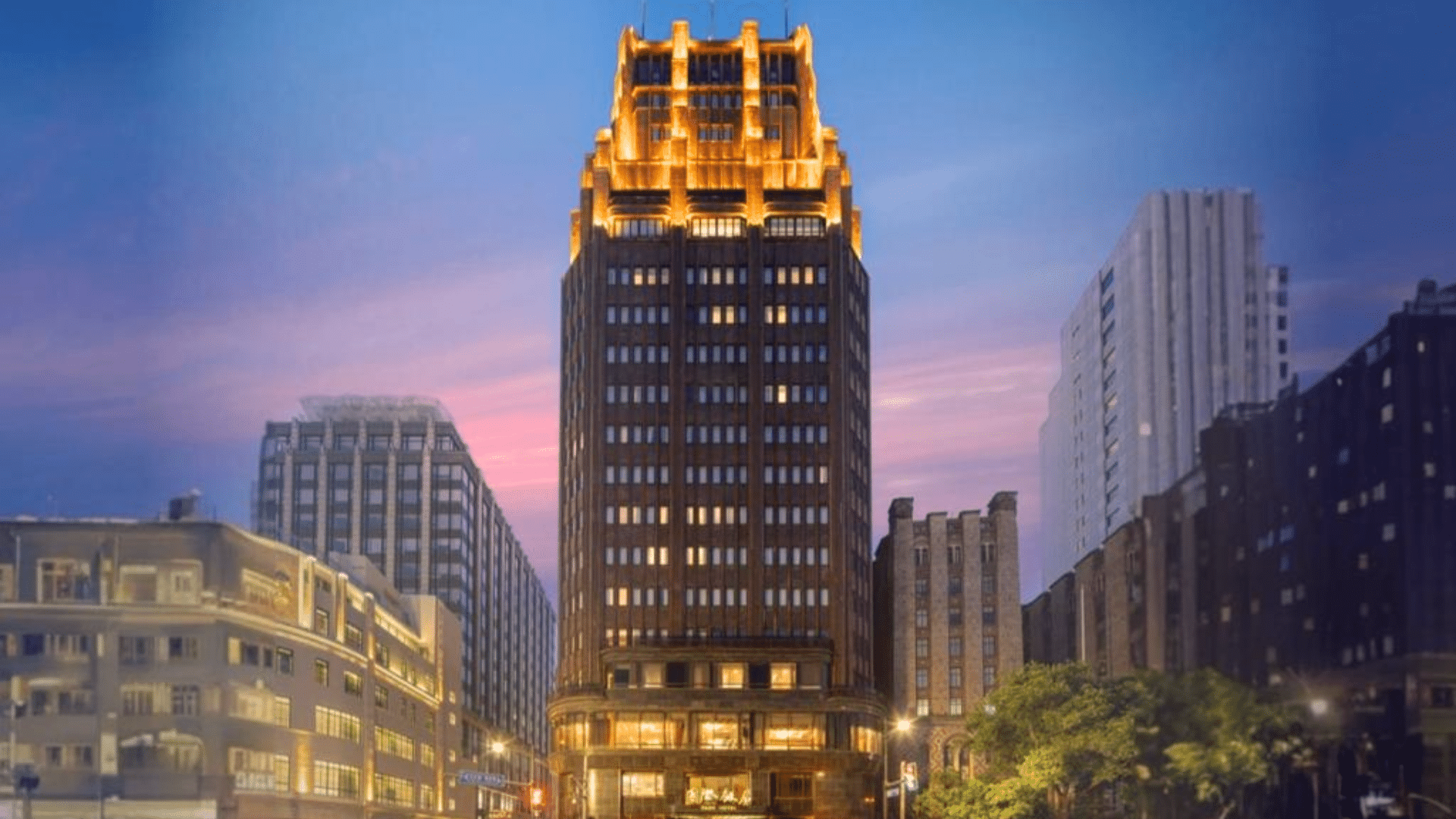
The Park Hotel in Shanghai was once the tallest building in the city when it opened in 1934. Designed by architect László Hudec, the building is an excellent example of early modern architecture in Shanghai.
The hotel’s design includes a distinctive tower with a tapered shape. It was a key part of Shanghai’s skyline before the city saw the rise of even taller skyscrapers.
The building remains a historic and architectural landmark in the city.
18. Jin Mao Tower
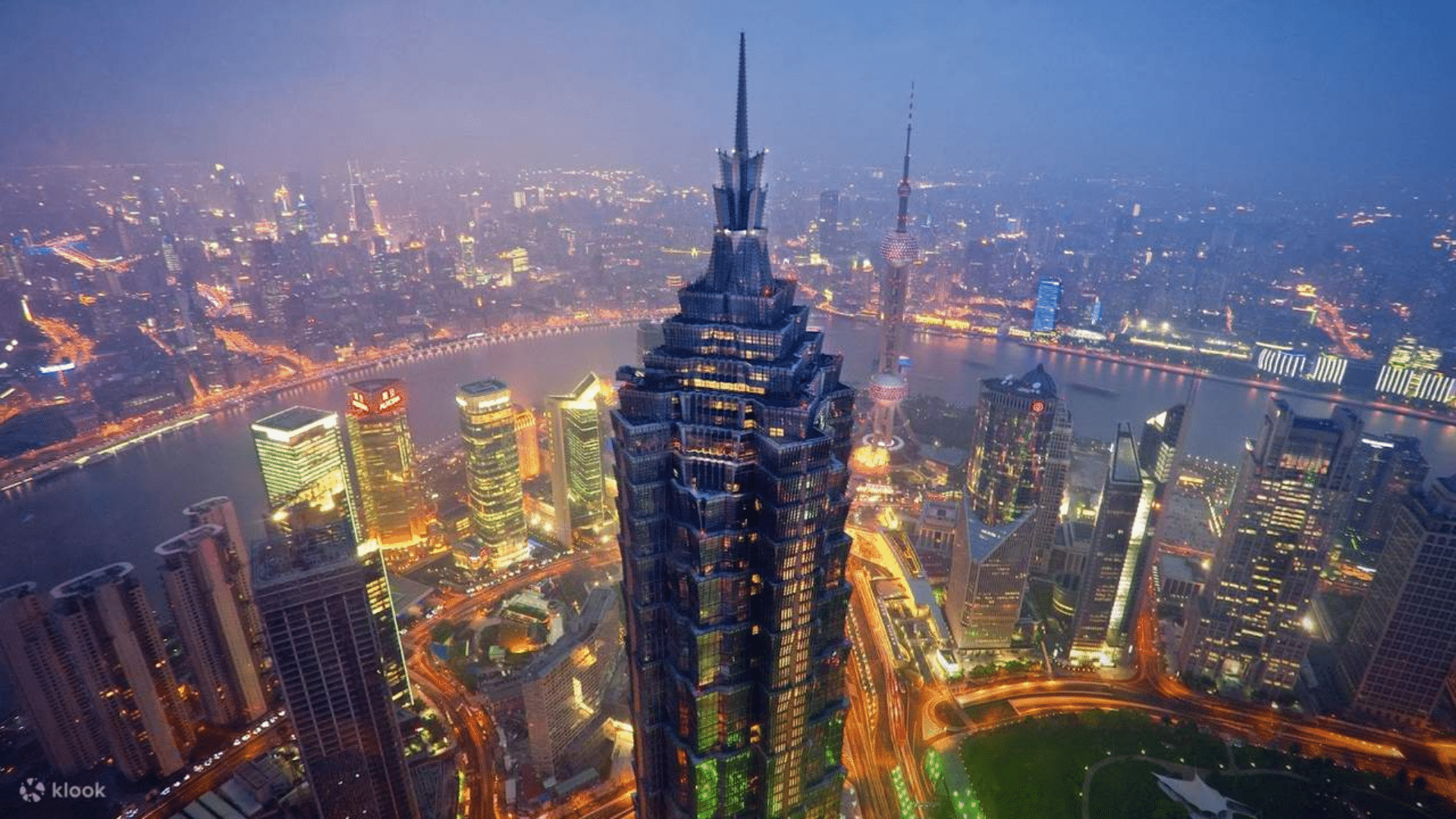
The Jin Mao Tower in Shanghai was the tallest building in China when it was completed in 1999. The building is 88 stories high and is designed with a unique stepped profile.
The exterior of the building has an aluminum frame with glass panels.
The design of the tower was inspired by traditional Chinese pagodas, making it a modern interpretation of ancient architecture. Visitors can enjoy stunning views of the city from the top of the tower.
19. The Shanghai Oriental Arts Center
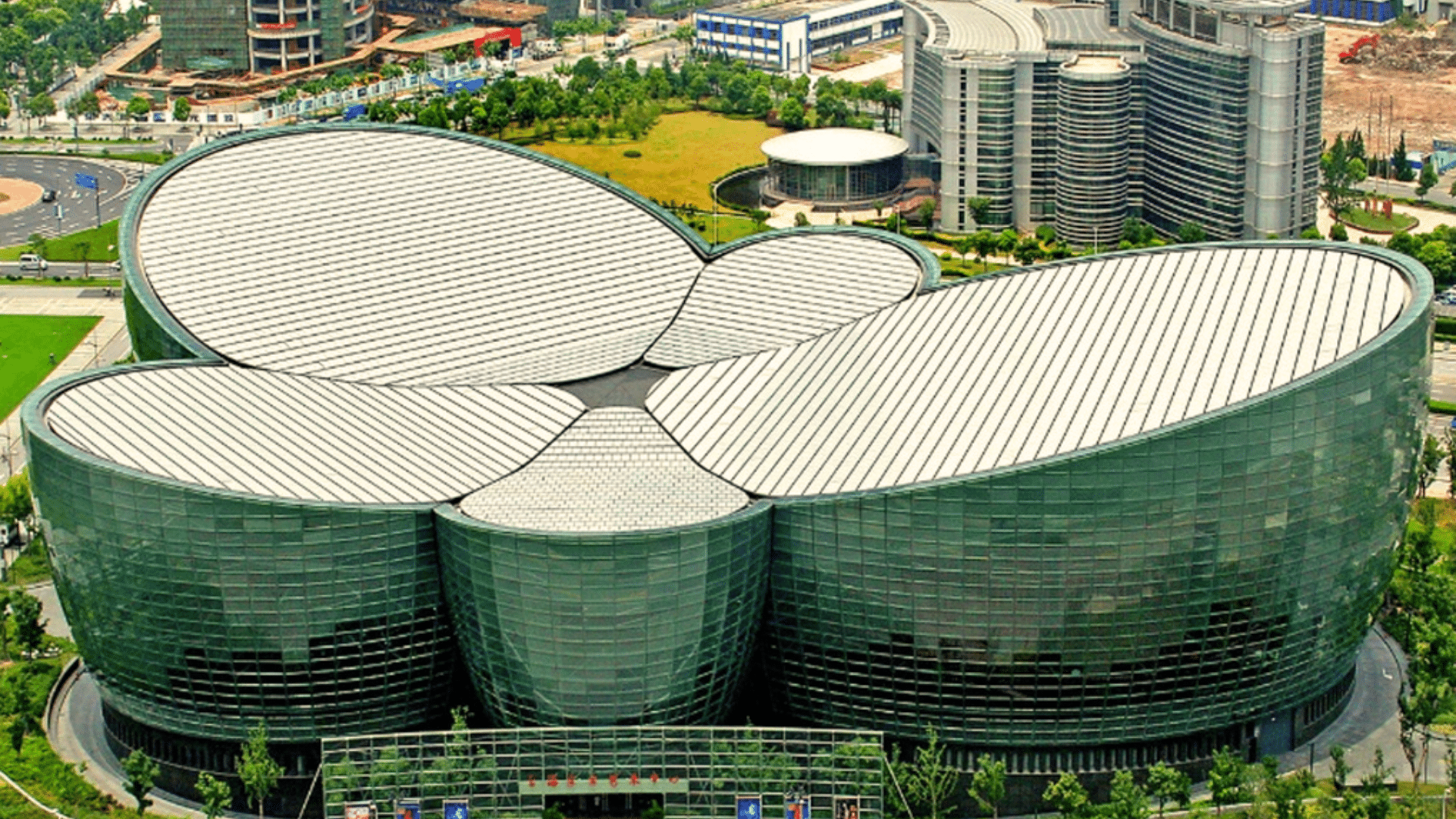
The Shanghai Oriental Arts Center is a beautiful building in Pudong, Shanghai. It looks like a five-petal flower with curved, glass sections.
Inside, there are halls for music, opera, and exhibitions. The building’s walls are covered in porcelain tiles that look like pebbles.
At night, the lights make it shine. The center hosts dance and music performances. It is a peaceful place in the middle of the busy city, combining nature and modern design in one space.
20. Shenzhen Airport Terminal
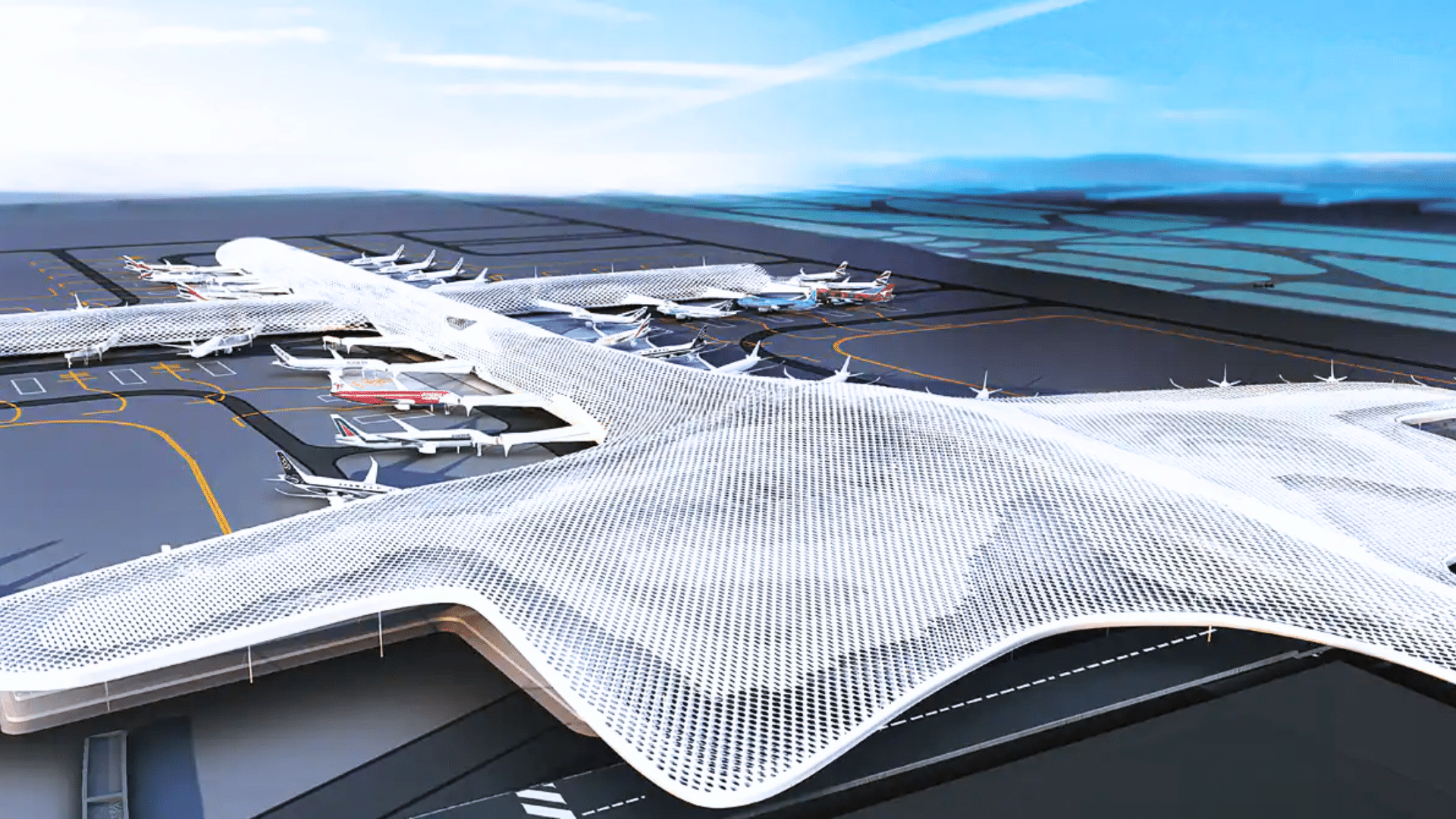
The Shenzhen Airport Terminal is a modern and large building. It was designed to handle millions of passengers each year.
The terminal has a unique shape, inspired by a manta ray. Its white walls and conical columns make it stand out. The terminal uses a lot of natural light with skylights and perforated metal cladding.
It is spacious and allows easy movement. This terminal helps make traveling smoother and more efficient in Shenzhen, one of China’s busiest cities.
21. Hall of Prayer for Good Harvests
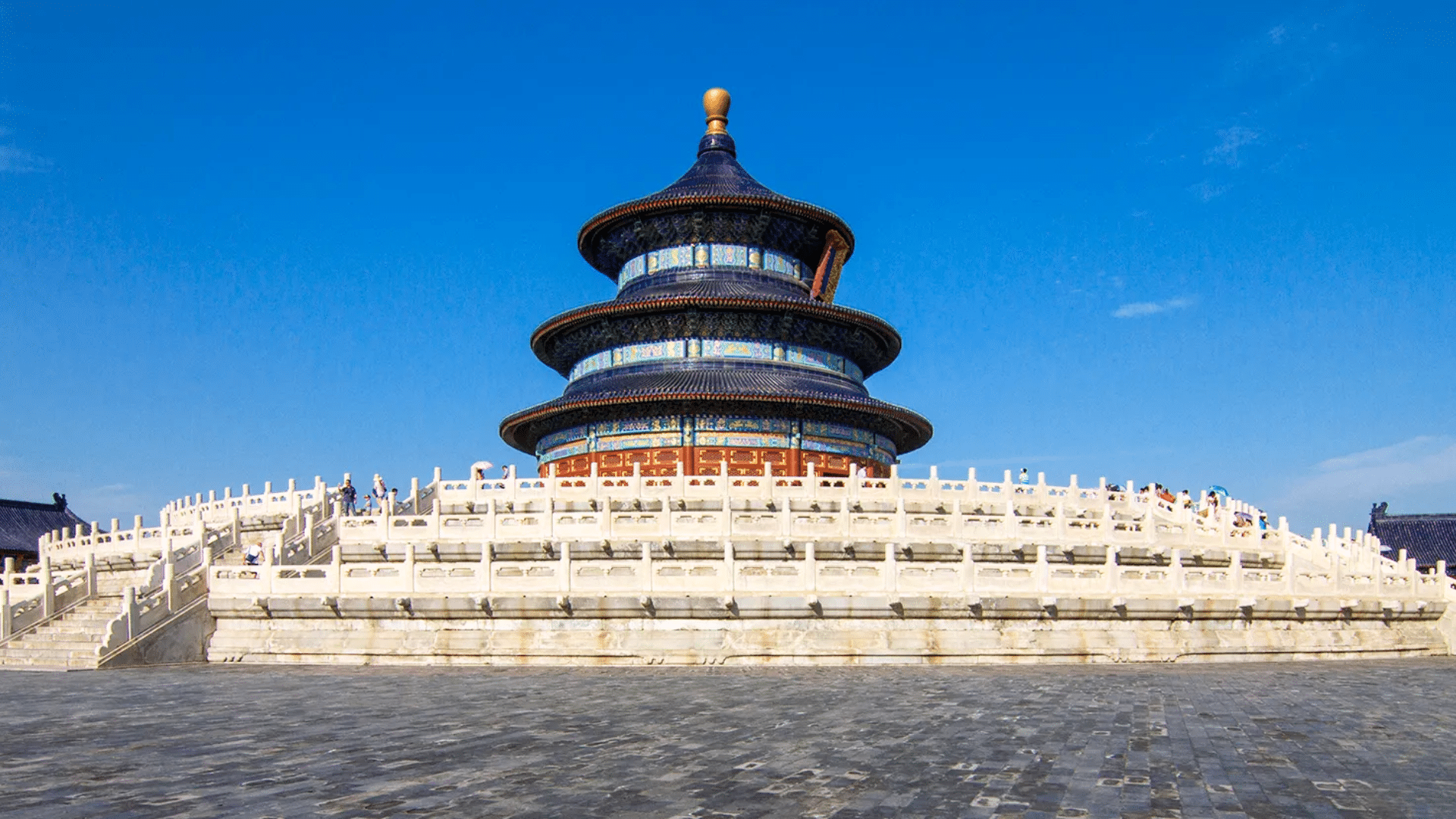
The Hall of Prayer for Good Harvests is in Beijing, China. It is part of the Temple of Heaven complex. The hall is a circular building with a beautiful, blue roof. It was used by emperors to pray for good harvests.
The hall is made entirely of wood and stands on a three-level terrace. Inside, there are golden decorations and a marble floor. The Hall of Prayer is an important part of China’s history and culture.
22. Hall of Supreme Harmony
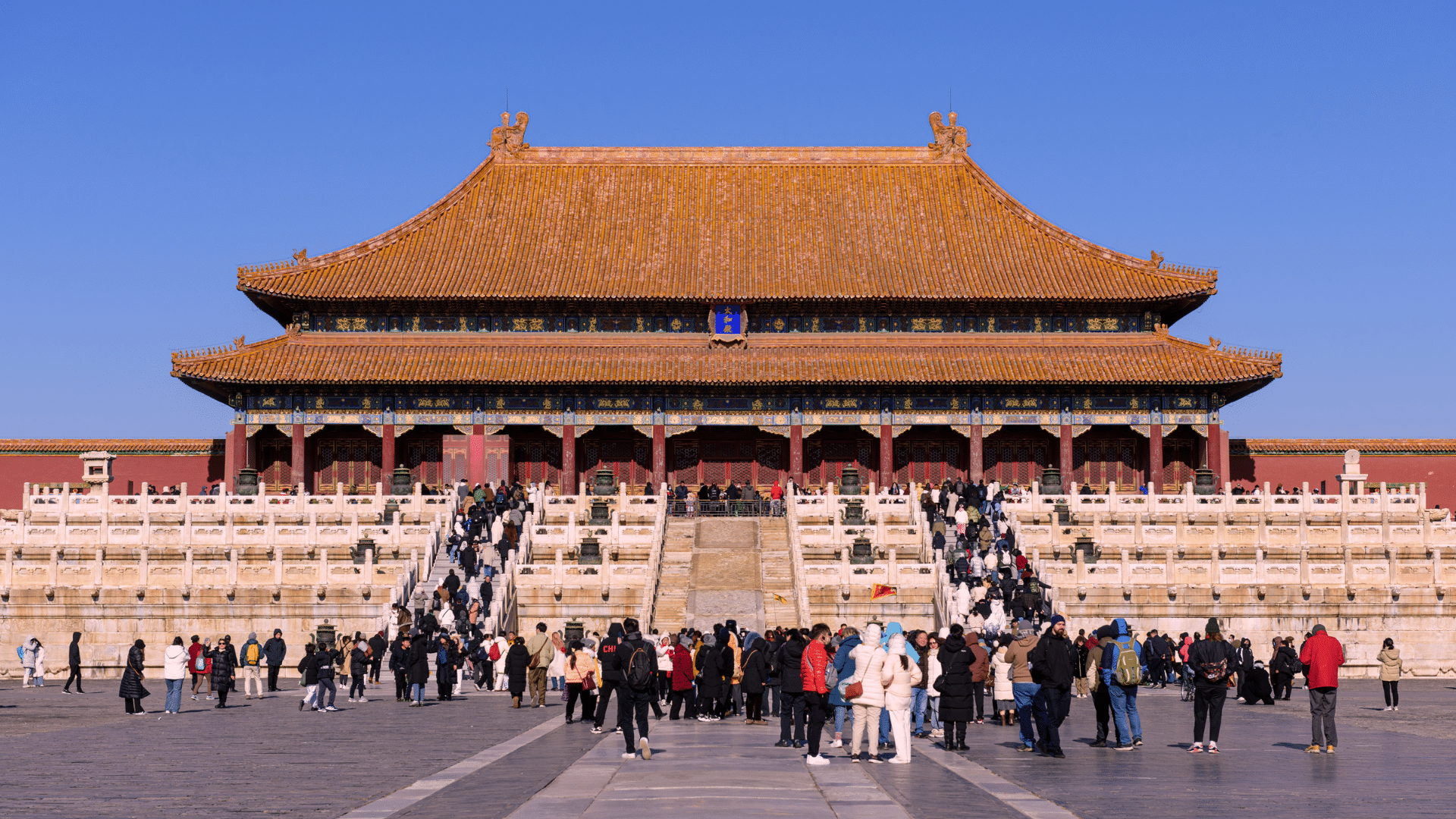
The Hall of Supreme Harmony is in Beijing, China. It is part of the Forbidden City. This hall was used by the emperor to receive visitors.
It is the largest hall in the Forbidden City. The building has a beautiful, golden interior with many symbols of power, like dragons.
The hall has a tall, double-eaved roof made of yellow tiles. It is an important example of traditional Chinese architecture and is a symbol of the emperor’s authority.
23. Tiger Hill Pagoda
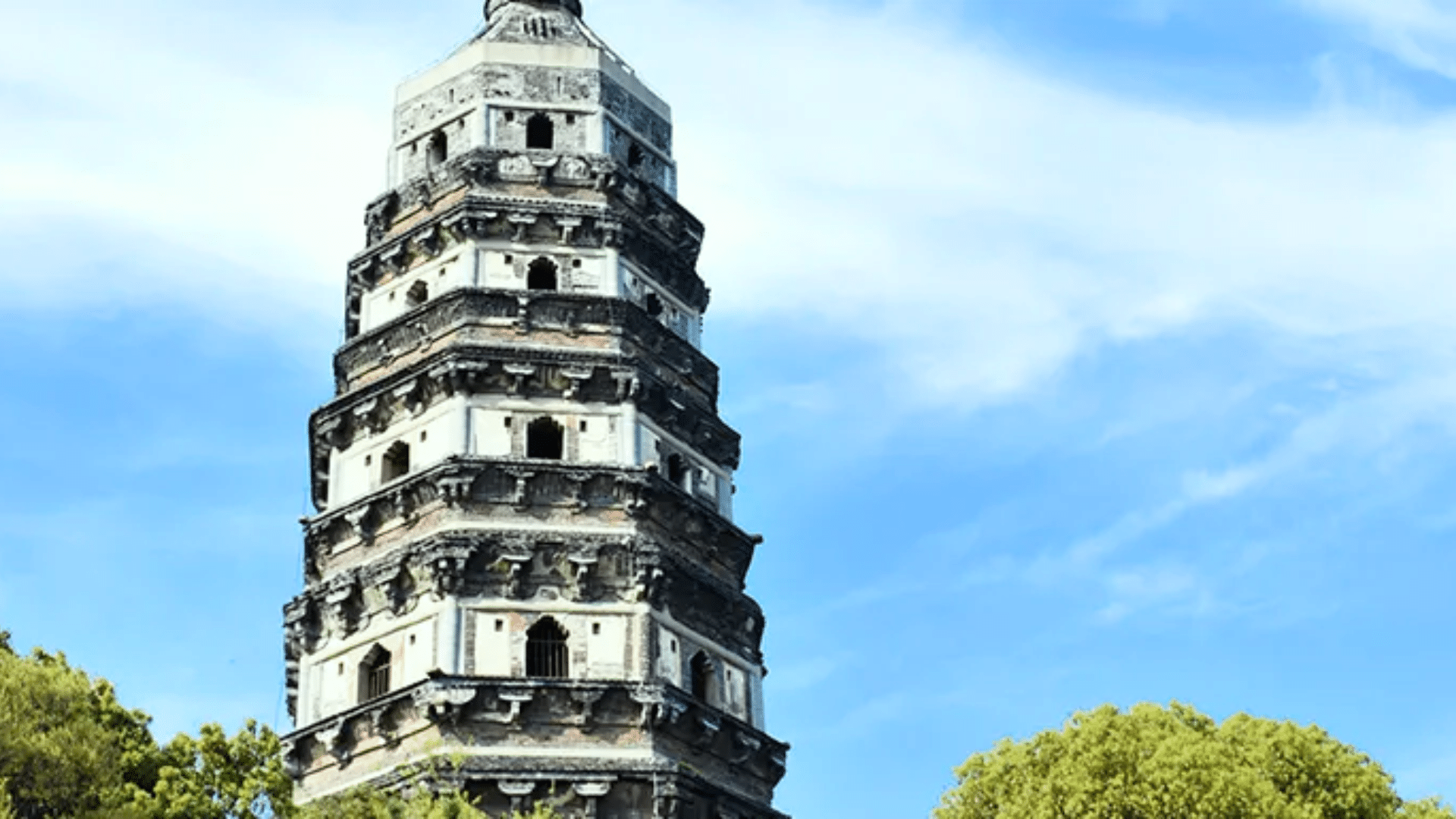
The Tiger Hill Pagoda is in Suzhou, China. It was built during the Song Dynasty. The pagoda is tall and has seven stories.
What makes it special is that it leans. It has been tilting for over 400 years. The pagoda is made of fine brick and decorated with beautiful patterns.
Even though it leans, it is still an important symbol of Suzhou. The pagoda is part of Tiger Hill, a famous site that many people visit.
24. Coffee House, Jinhua Architecture Park
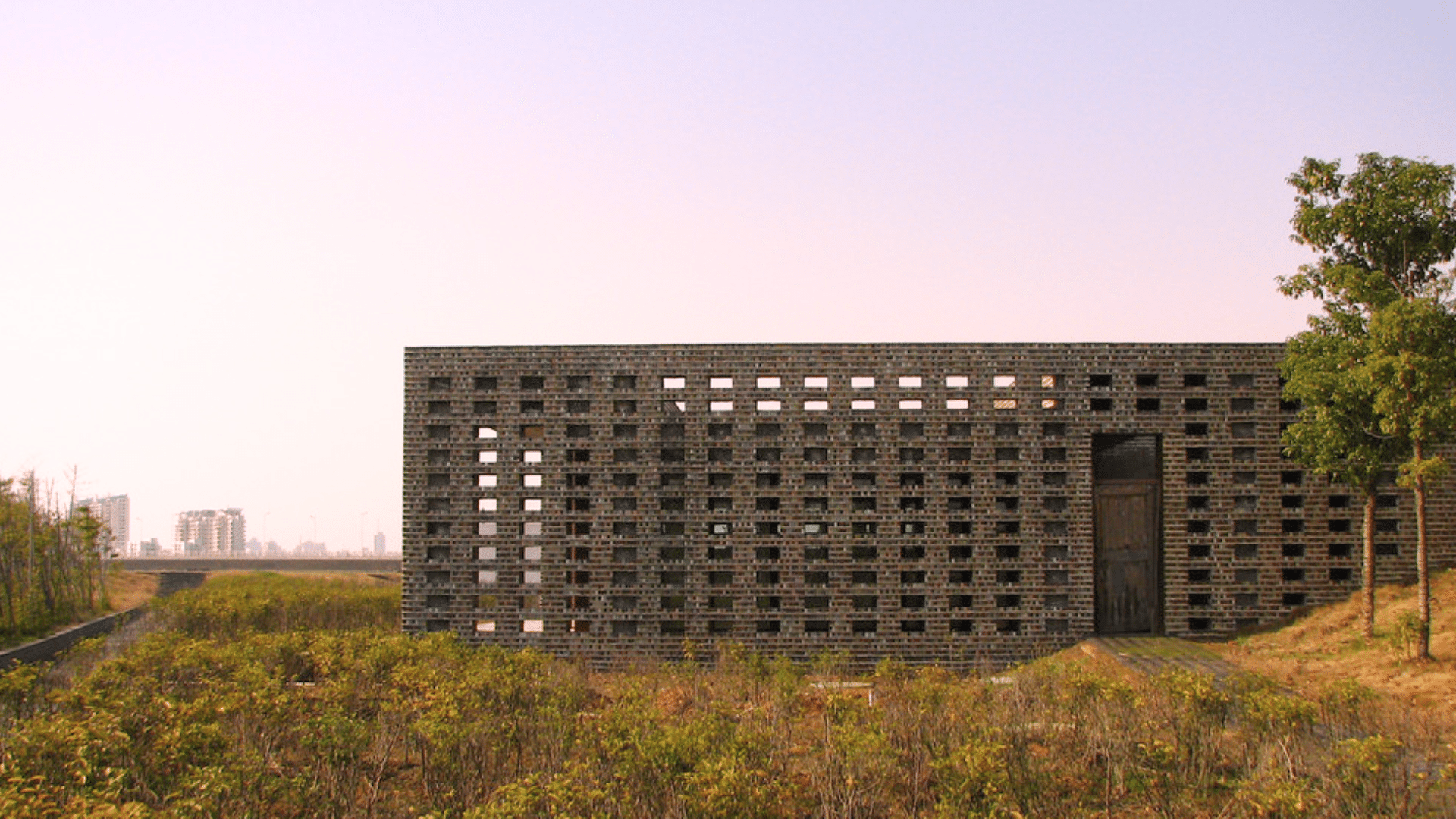
The Coffee House is in Jinhua, China. It was designed by Wang Shu, a famous architect. The building looks like a simple cube with small square holes on one side.
It’s covered with tiny tiles in different colors, giving it a detailed surface. The design mixes simple shapes with complex patterns.
The Coffee House is part of a park that features many unique buildings by different architects. It shows how architecture can focus on both form and surface.
25. Forbidden City
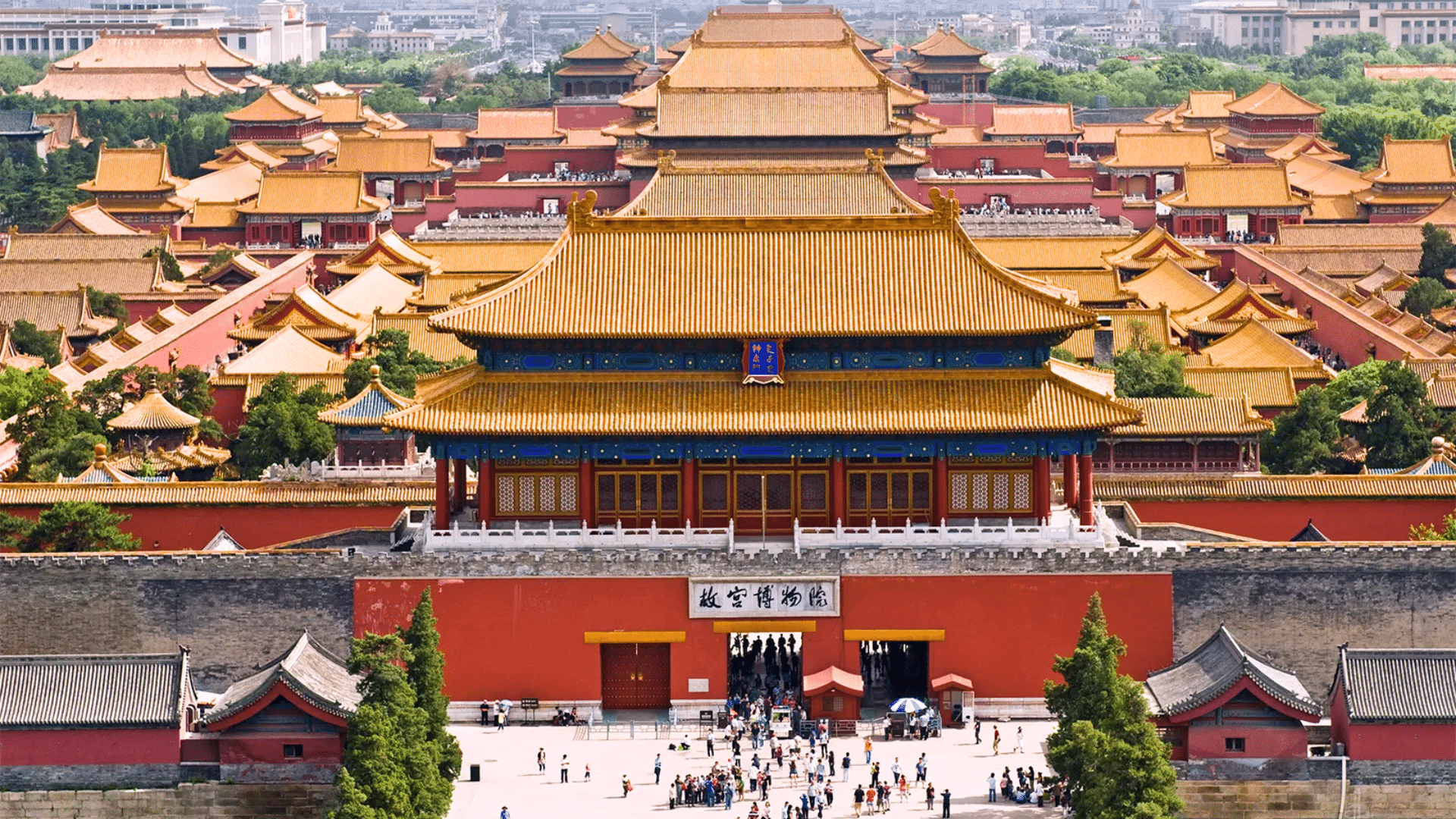
The Forbidden City is in Beijing, China. It was built in the 1400s during the Ming Dynasty. This huge palace complex, with over 900 buildings, was home to Chinese emperors for almost 500 years.
A large wall and a moat surround the Forbidden City. It was called “forbidden” because no one could enter without permission.
Today, it is a popular museum where visitors can learn about China’s history and culture. It is a UNESCO World Heritage site.
26. The Temple of Heaven
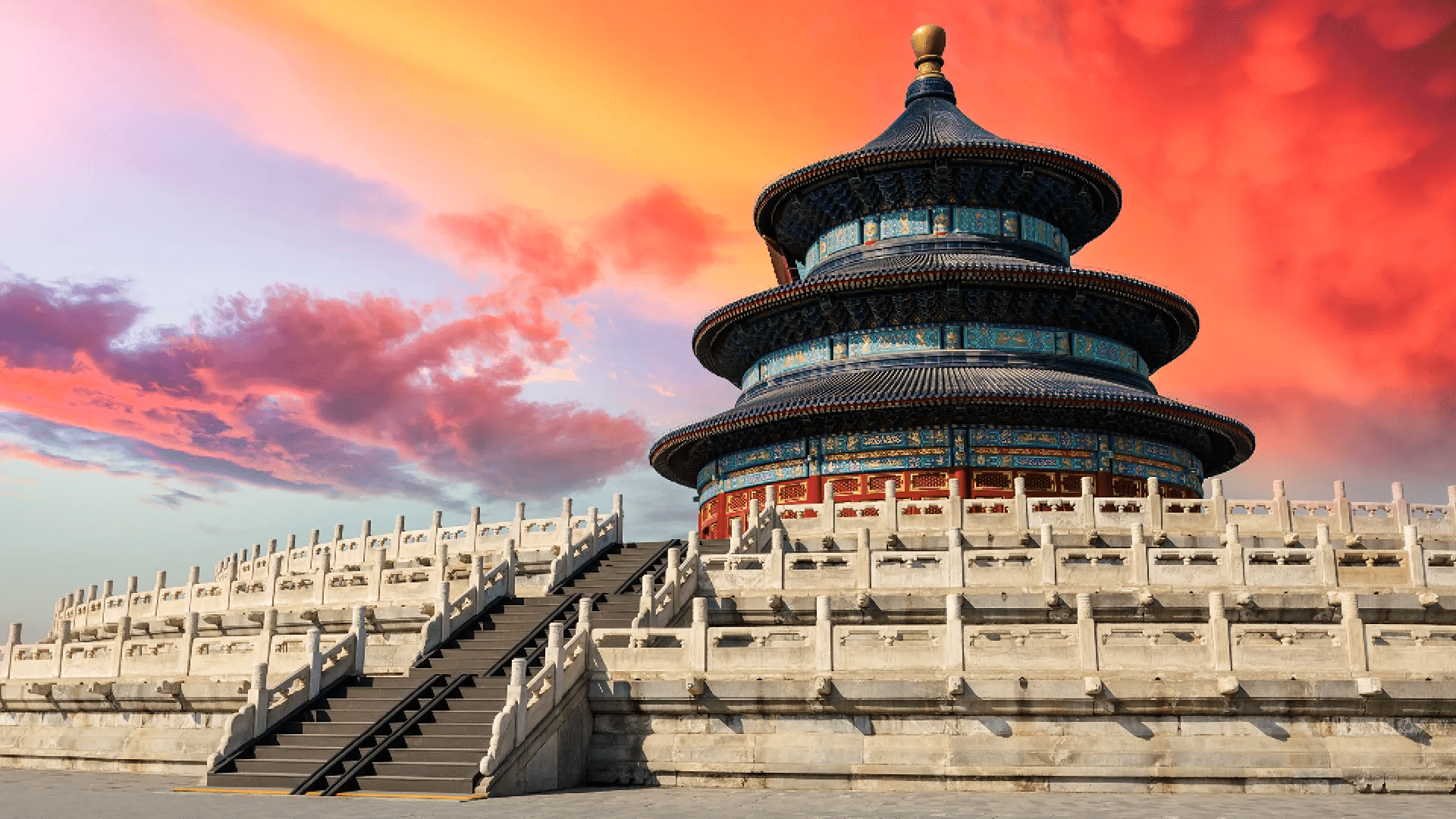
The Temple of Heaven is in Beijing, China. It is a beautiful and historic site. The temple was built in the 1400s during the Ming Dynasty.
It was used by emperors to pray for good harvests. The temple has a special round shape to represent heaven. It stands in a large park, which is a peaceful place for visitors to walk and enjoy nature.
The Temple of Heaven is an important part of Chinese culture and a UNESCO World Heritage site.
27. Tiananmen Square
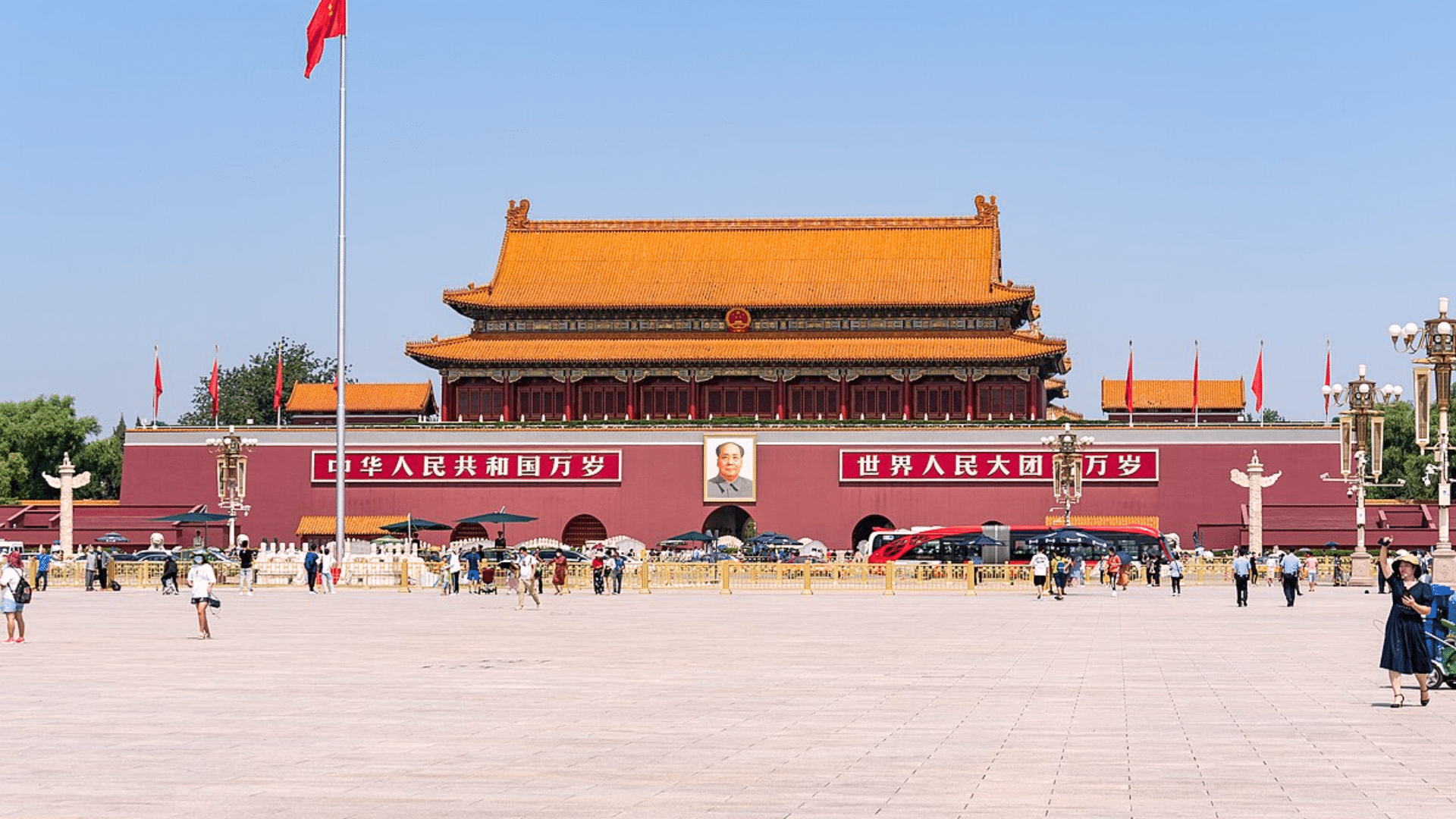
Tiananmen Square is one of the largest public squares in the world. It is located in the heart of Beijing, China.
Important buildings, like the Great Hall of the People and the National Museum of China, surround the square. It is also home to the famous Tiananmen Gate and the Mausoleum of Mao Zedong.
Tiananmen Square has great historical significance and is often a site for important events and ceremonies. It is a popular place for both locals and tourists.
28. The Bund
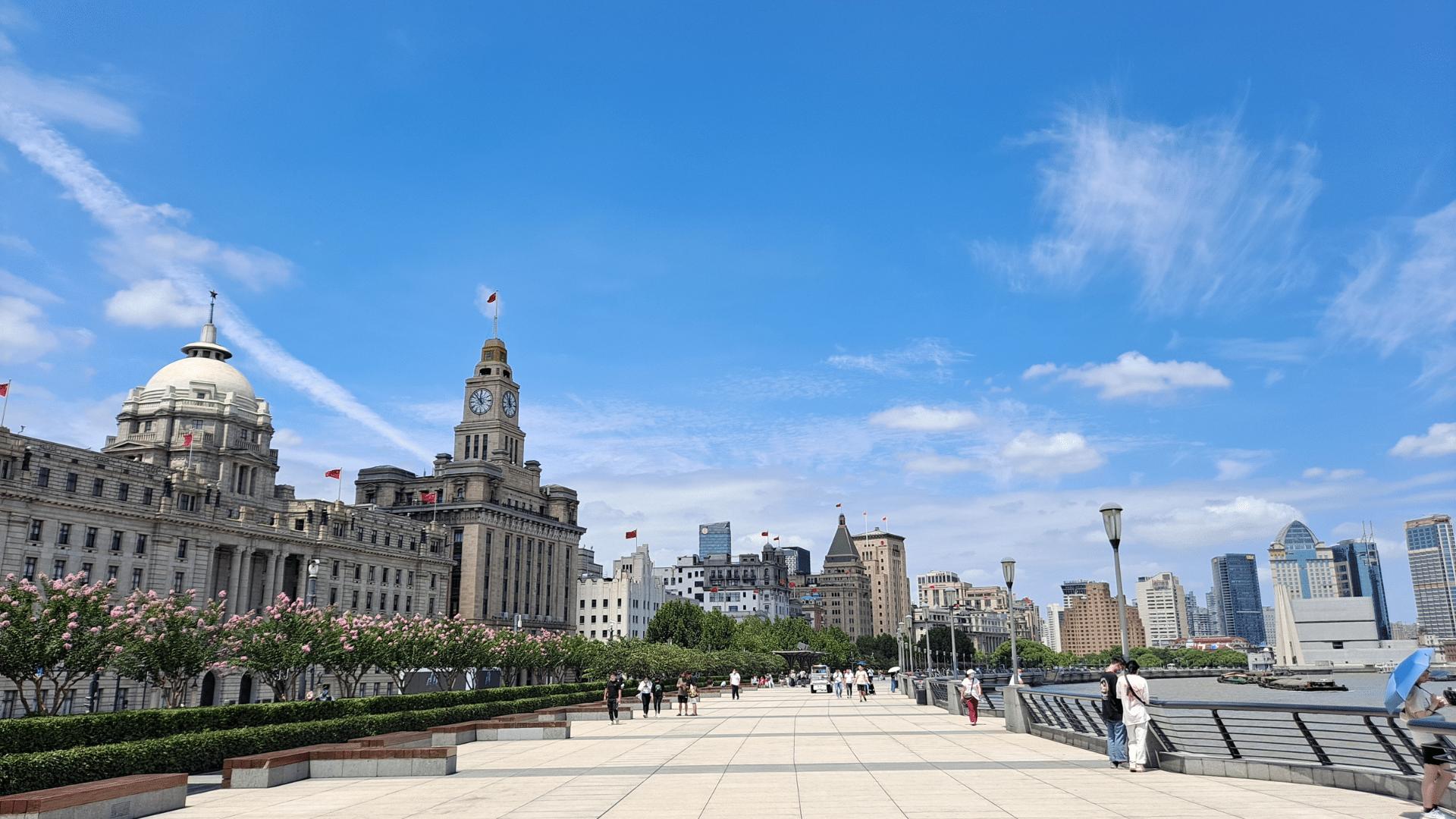
The Bund is a famous waterfront area in Shanghai. It stretches along the Huangpu River and offers stunning views of the city.
This area is known for its colonial-era buildings, which showcase different architectural styles. You can walk along the promenade and see the blend of old and modern Shanghai.
The Bund is a great place for sightseeing, taking photos, and enjoying the view of Shanghai’s skyline, including the impressive skyscrapers across the river. It’s a must-see for visitors.
Conclusion
China is home to many beautiful and historic buildings. From ancient temples to modern skyscrapers, each building tells a unique story of China’s rich culture and history.
If you visit the Forbidden City, the Temple of Heaven, or the Guangzhou Opera House, you will experience the blend of old traditions and new designs.
These landmarks are not only architectural wonders but also important symbols of China’s heritage and progress. Exploring these sites gives visitors a deeper understanding of China’s past, present, and future.
Make sure to visit these must-see buildings on your next trip to China.
If you found this guide helpful, check out other blogs on our website for more travel inspiration.

